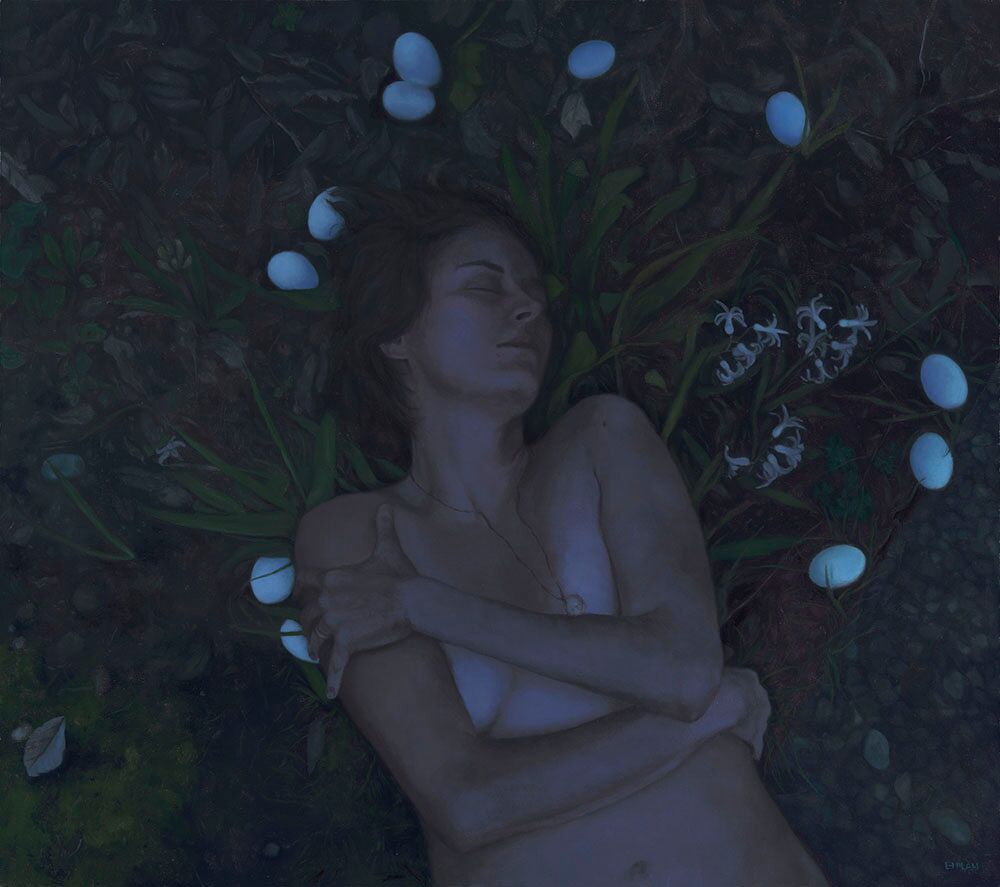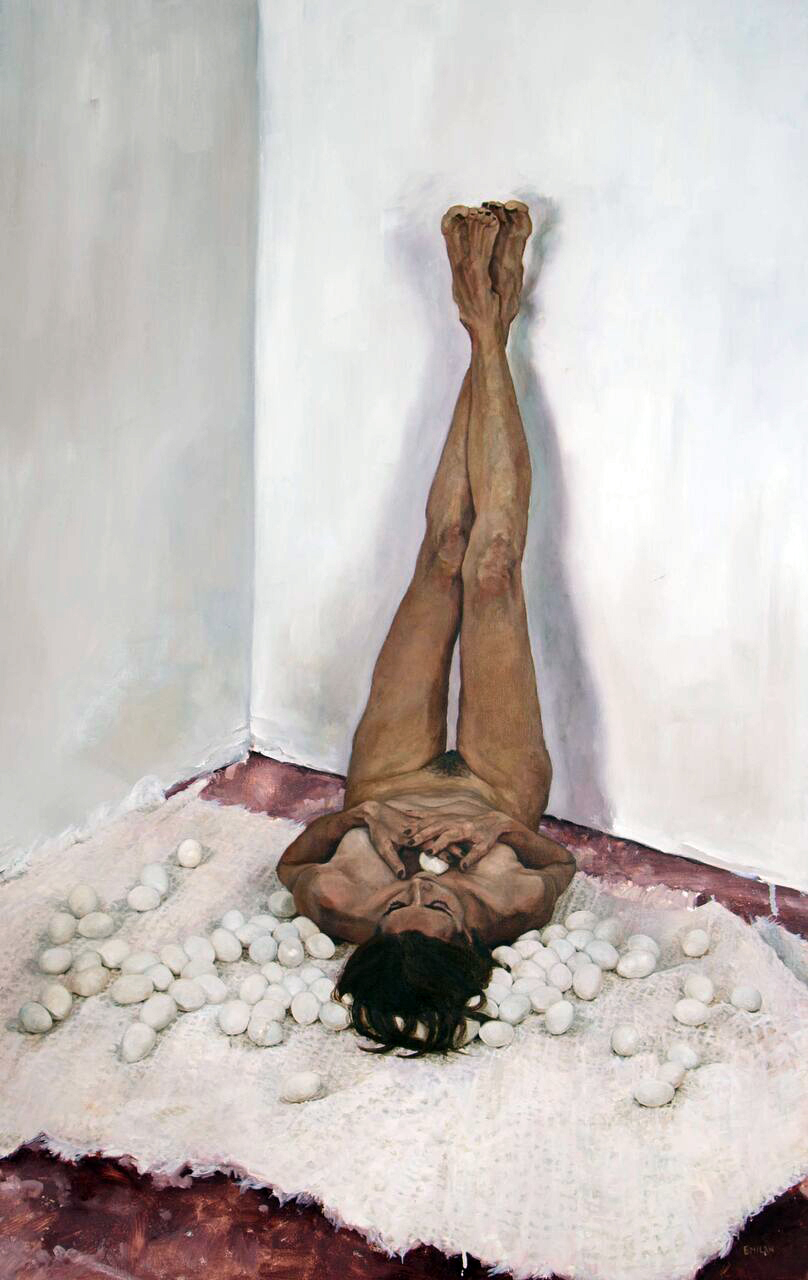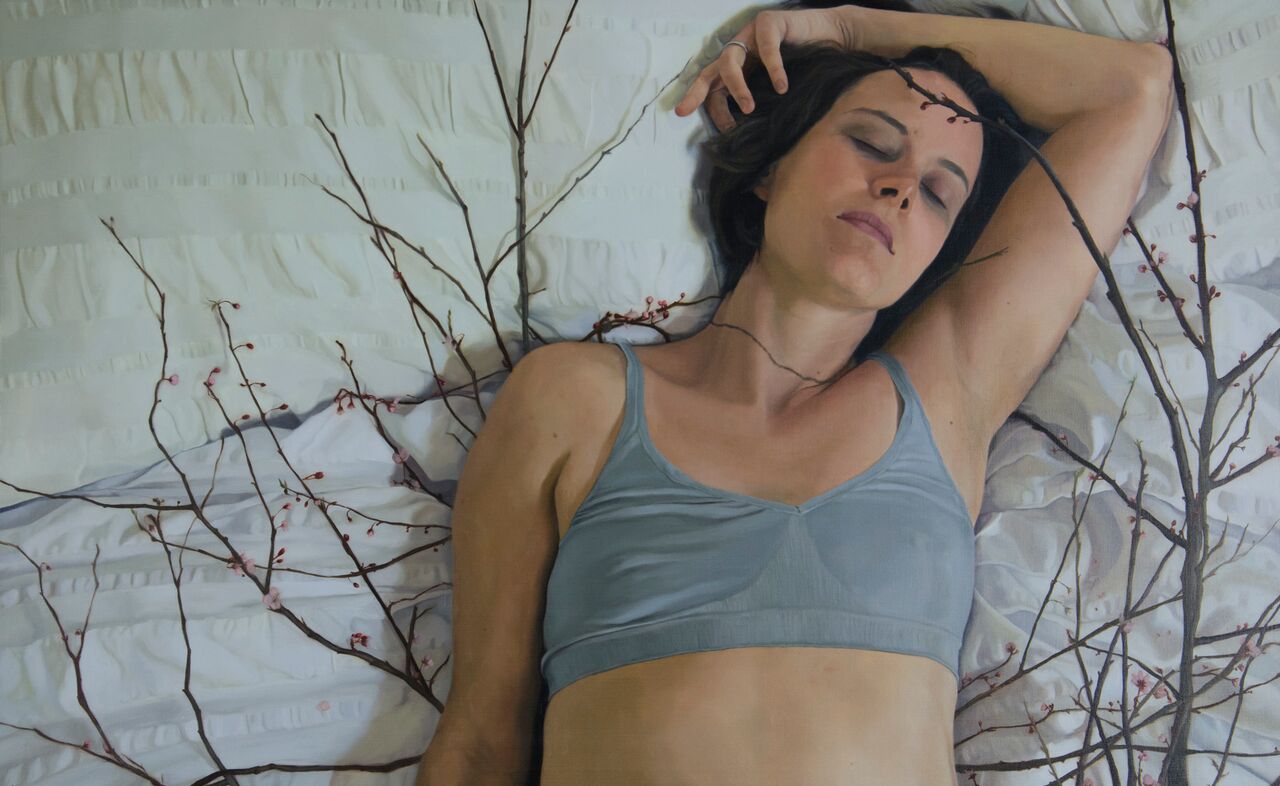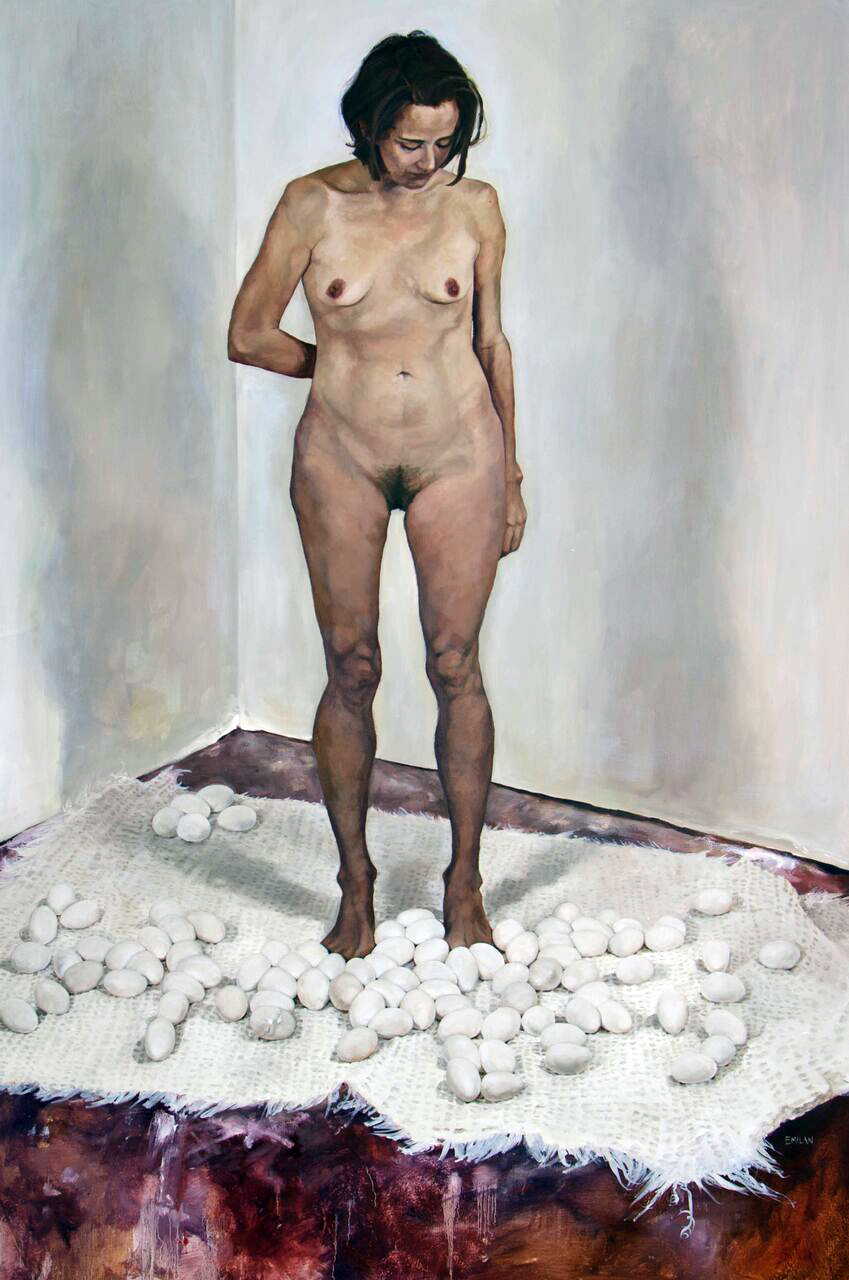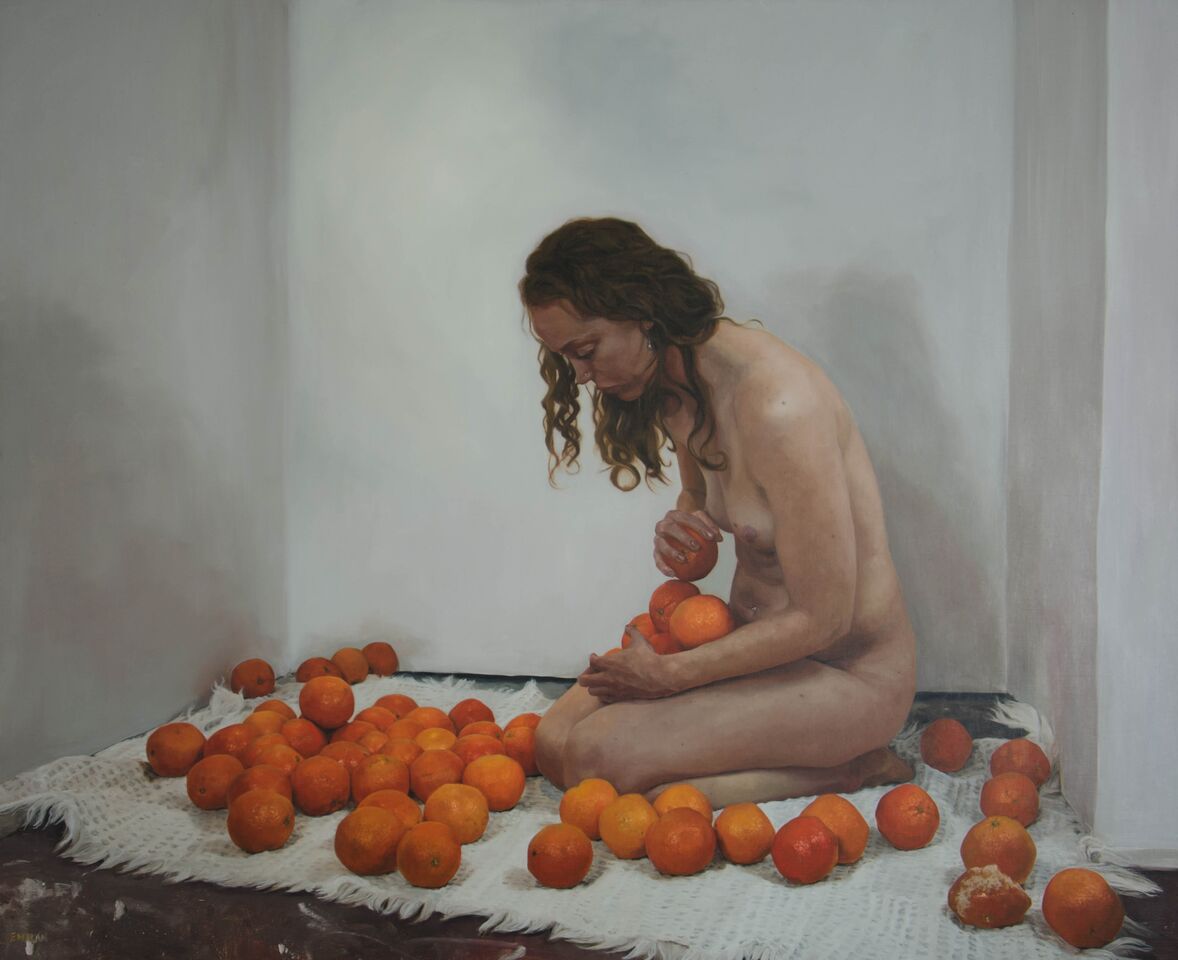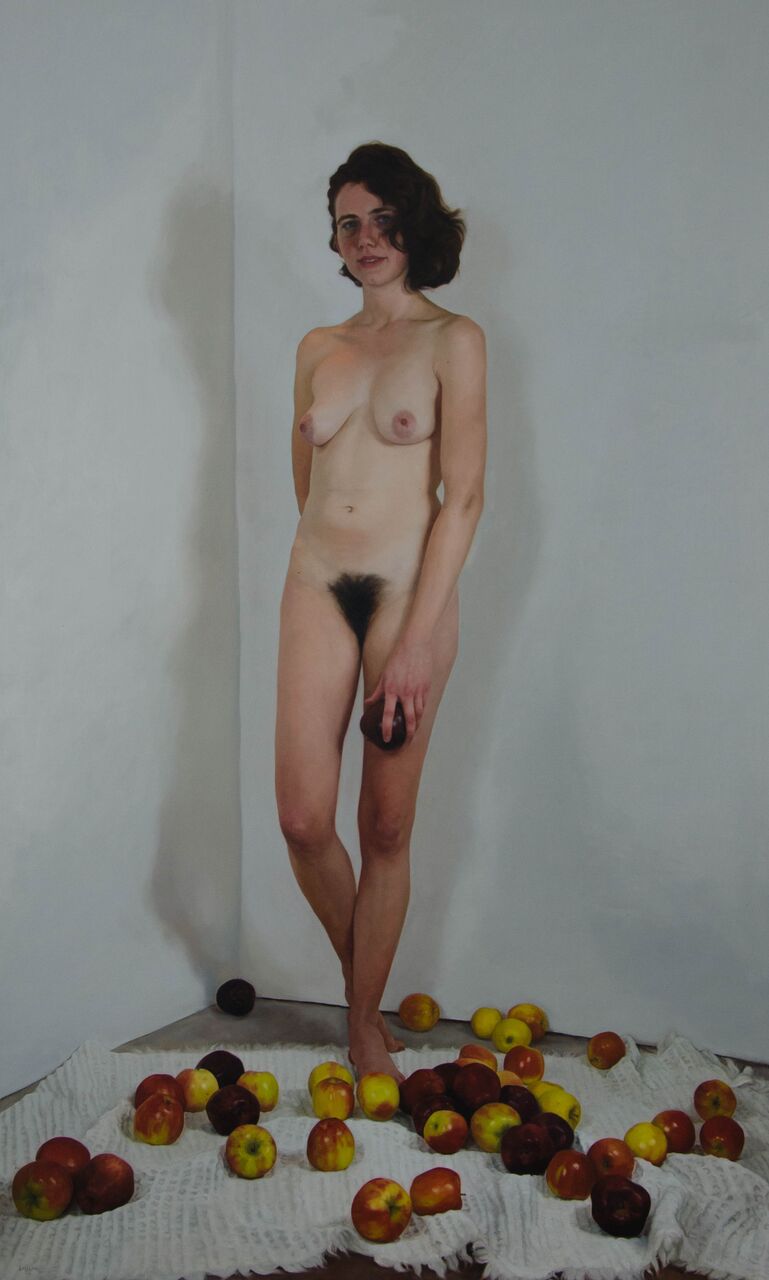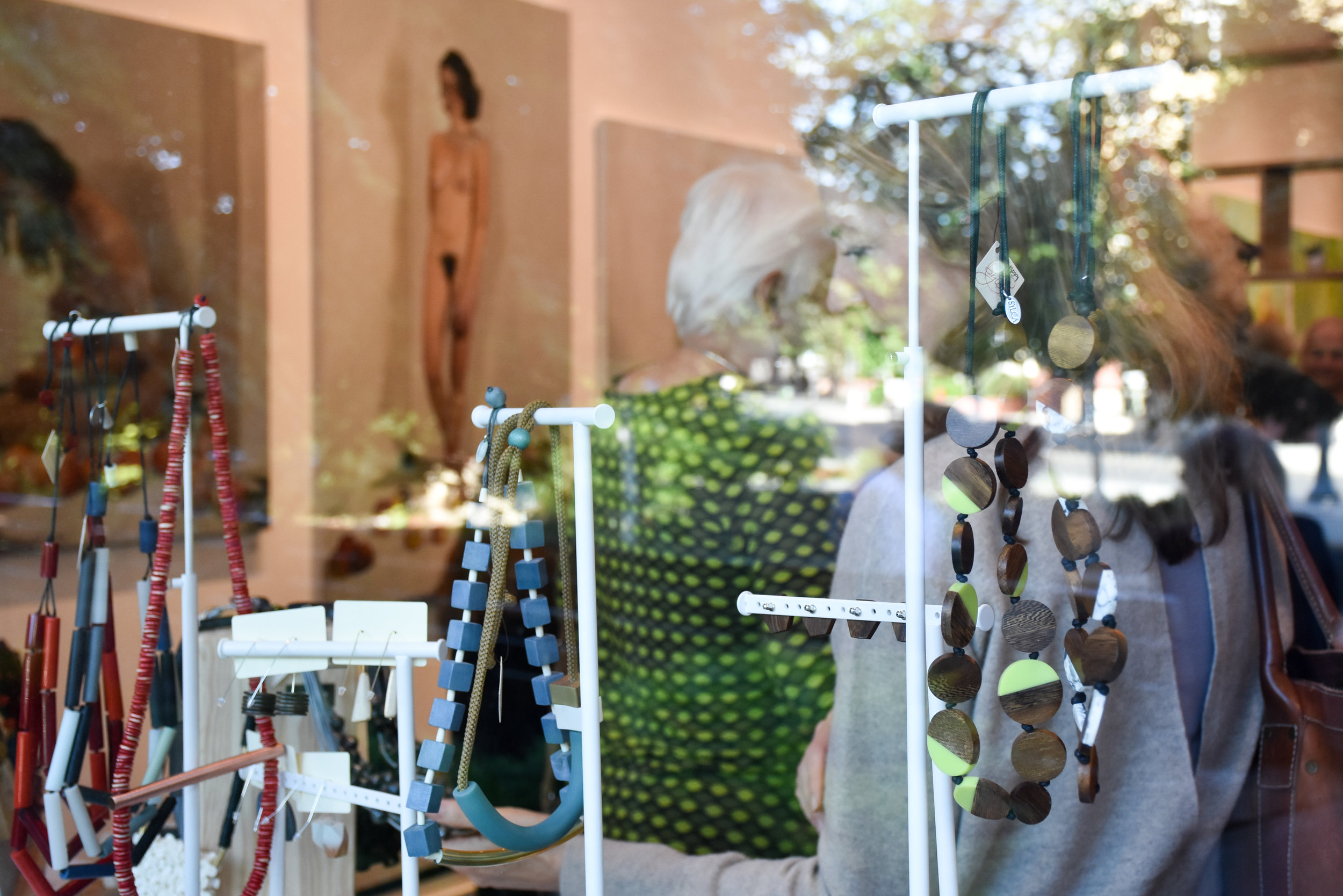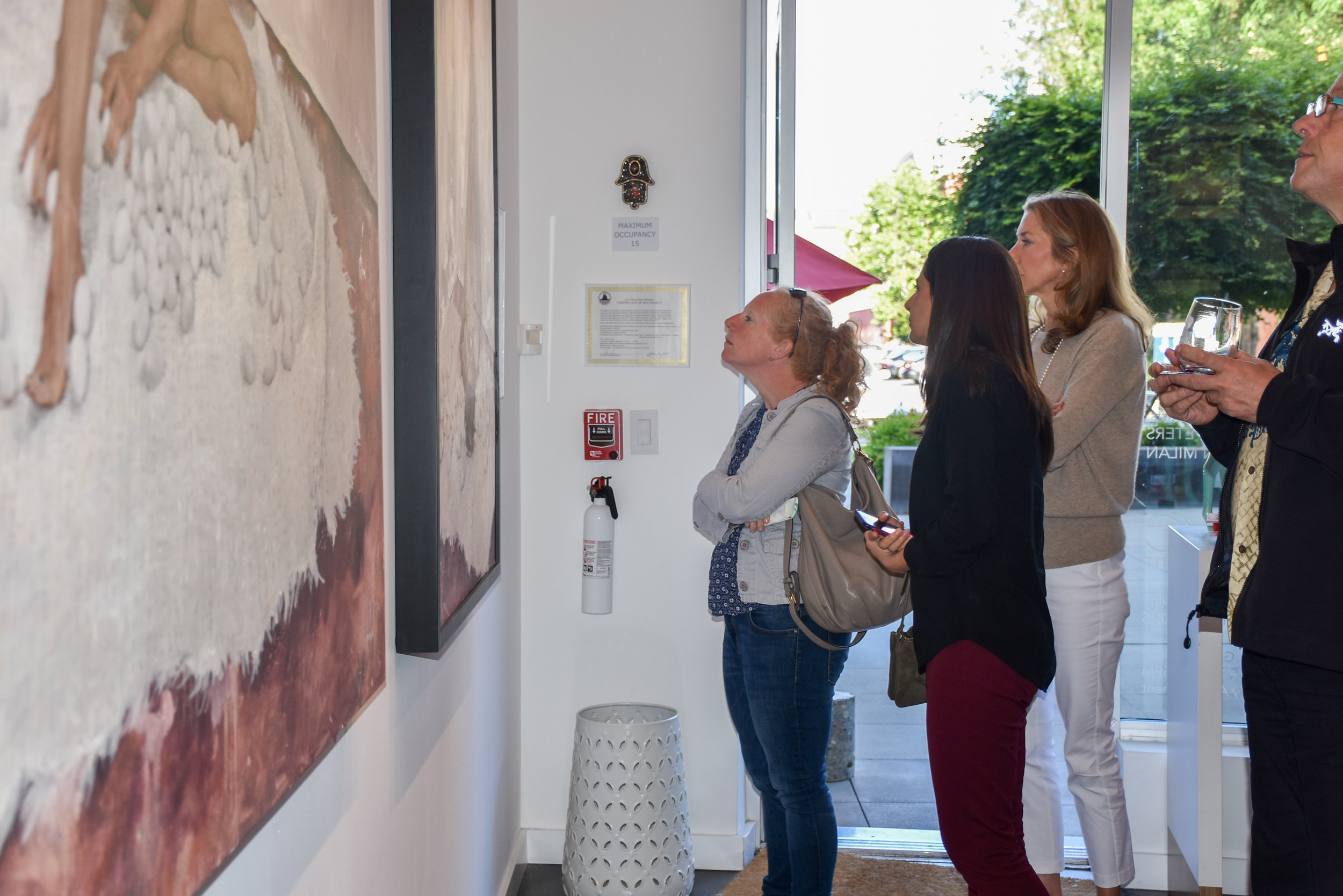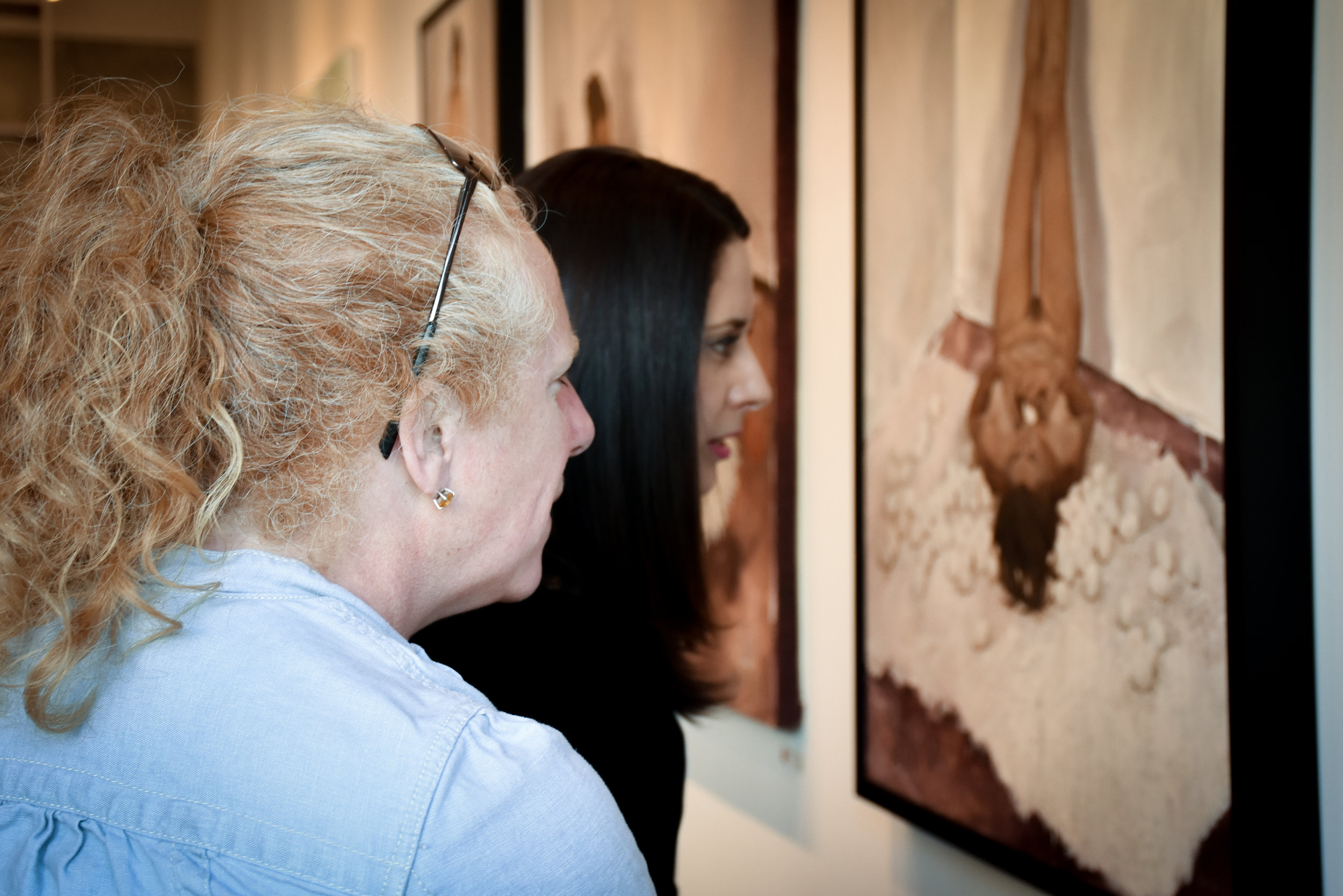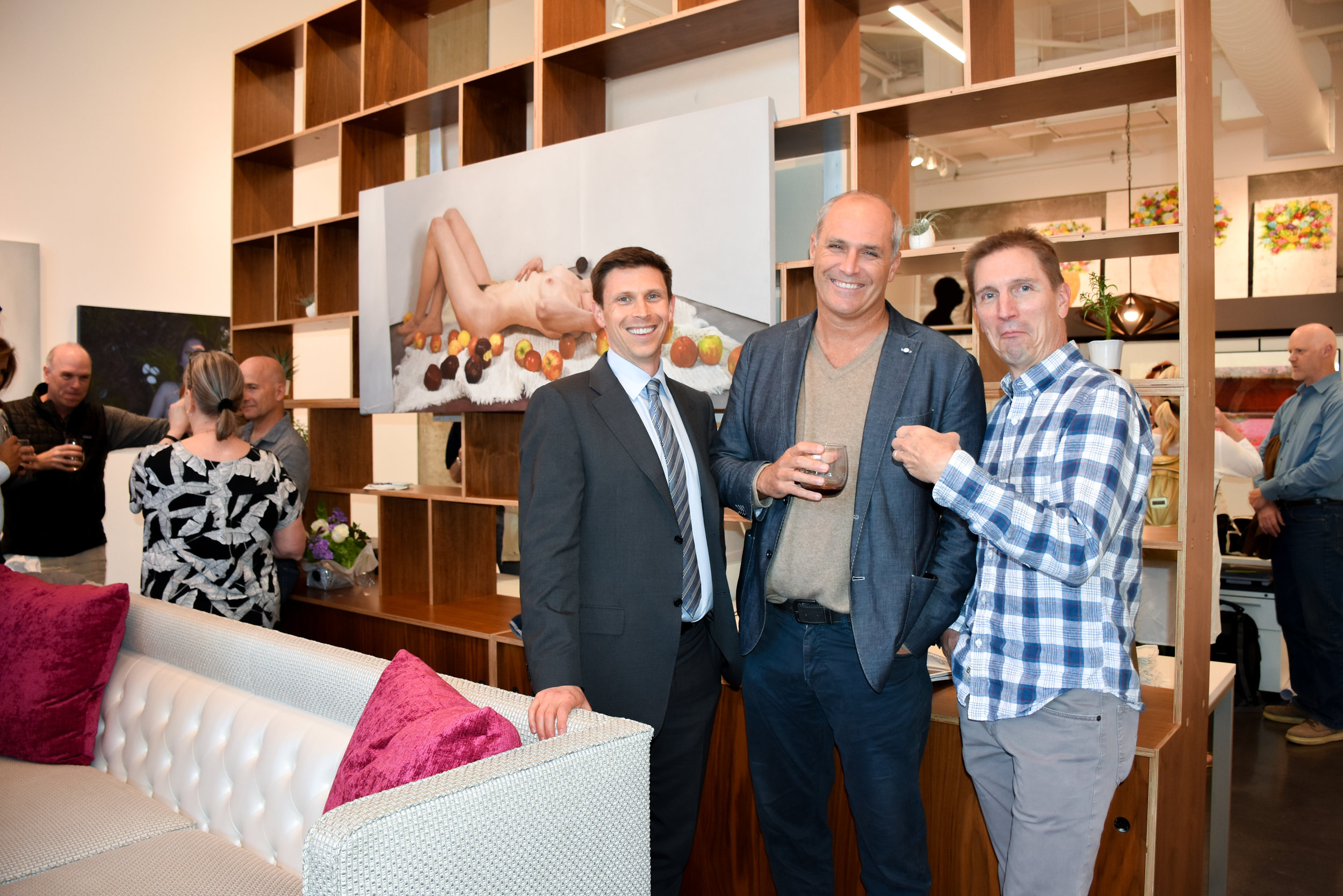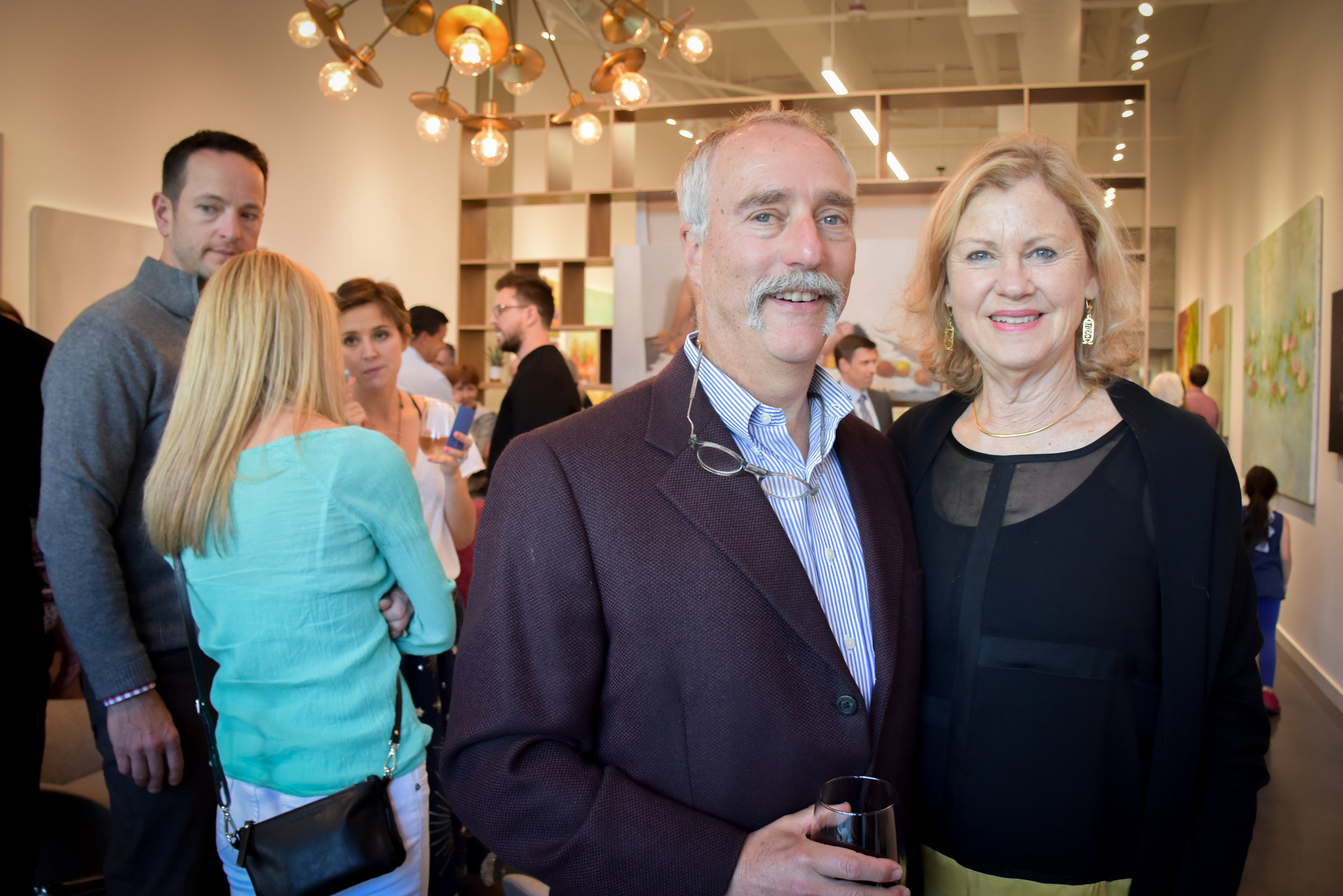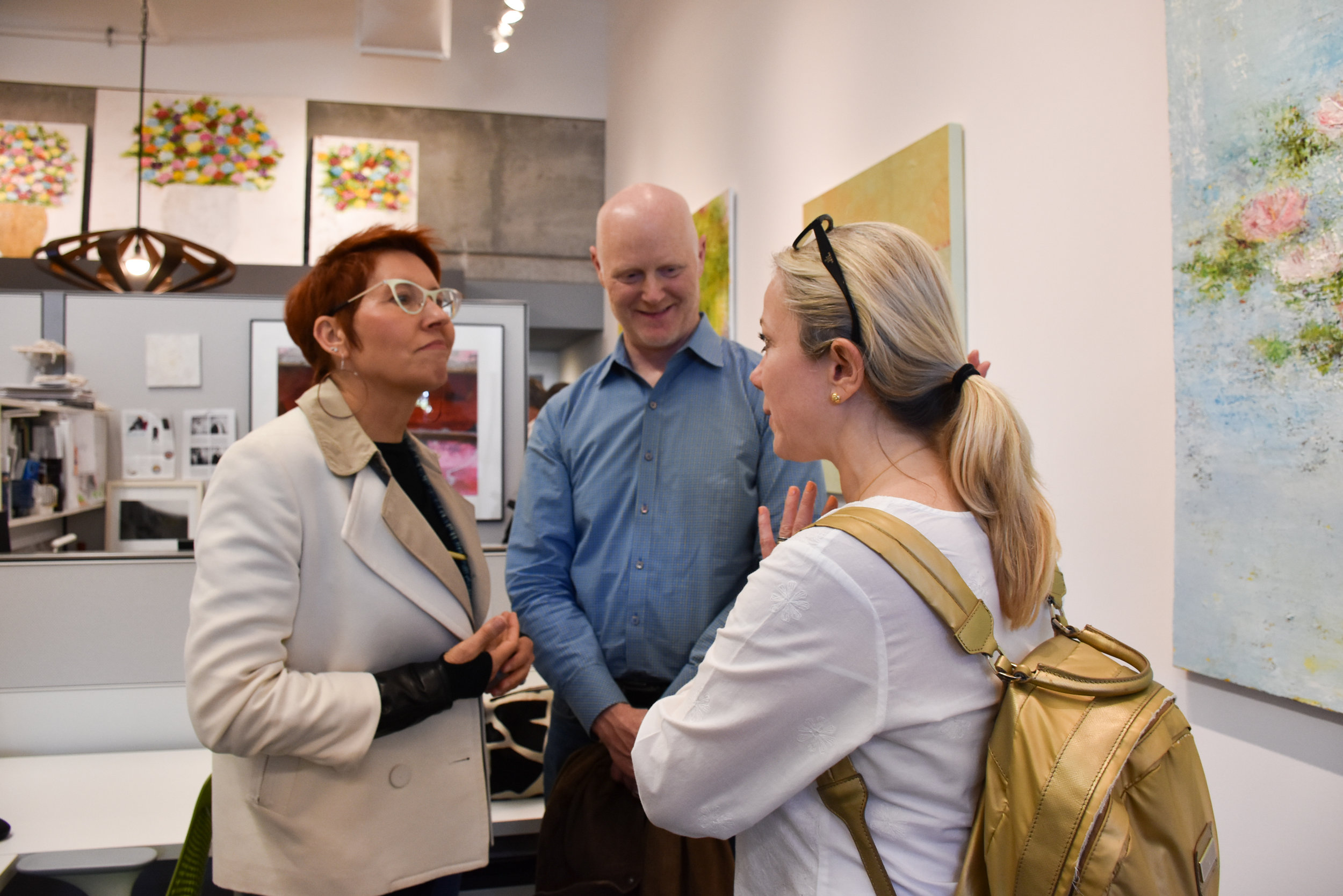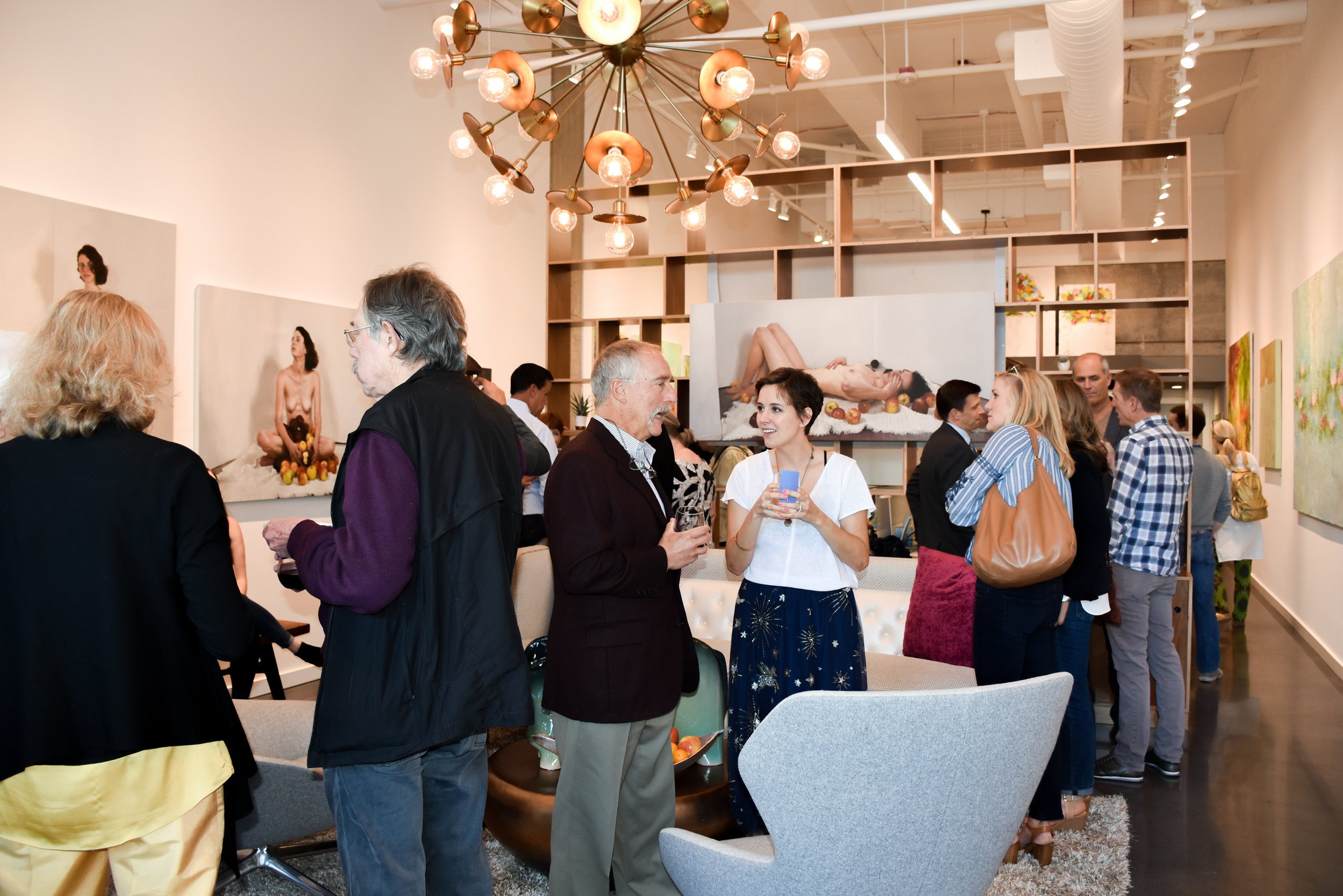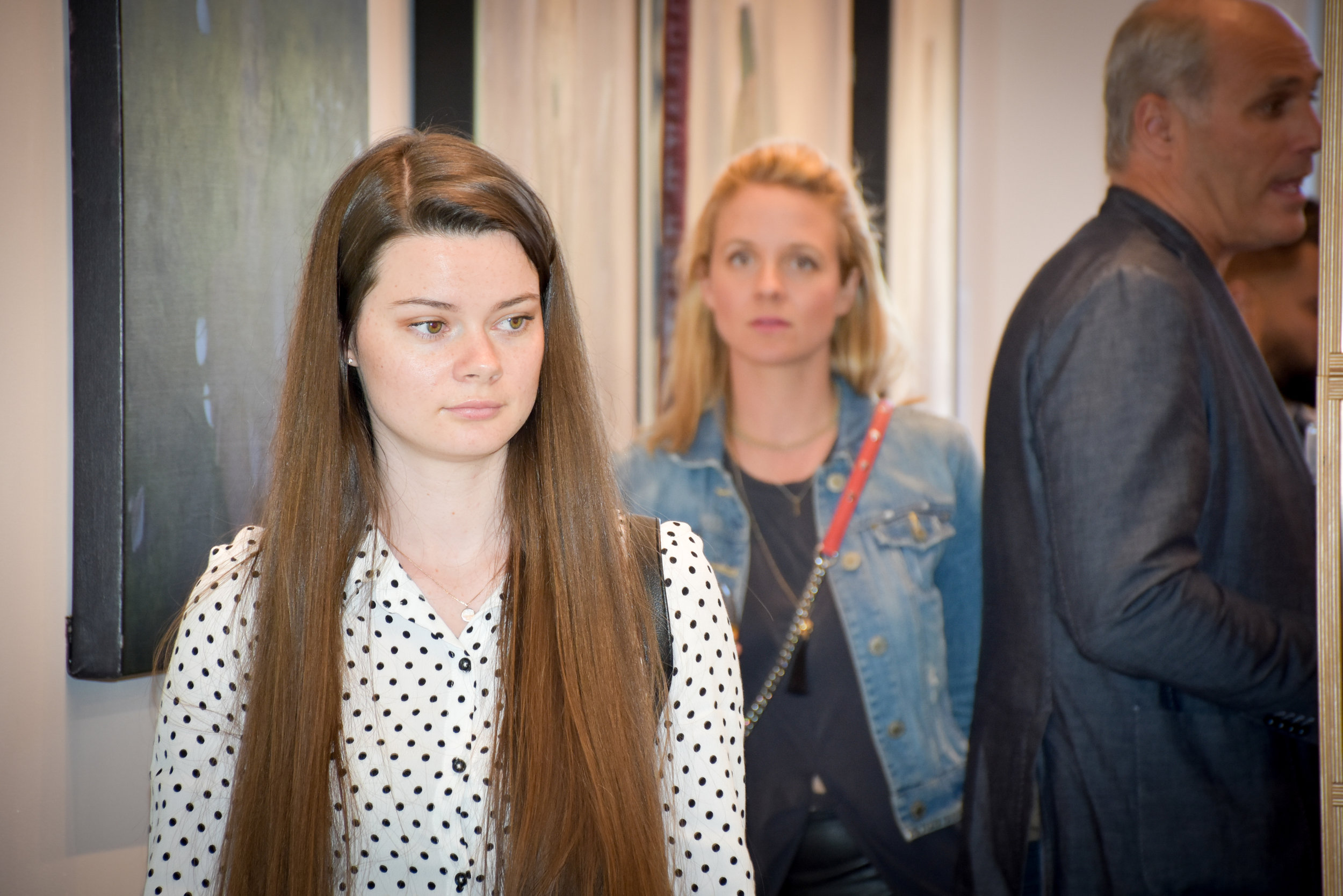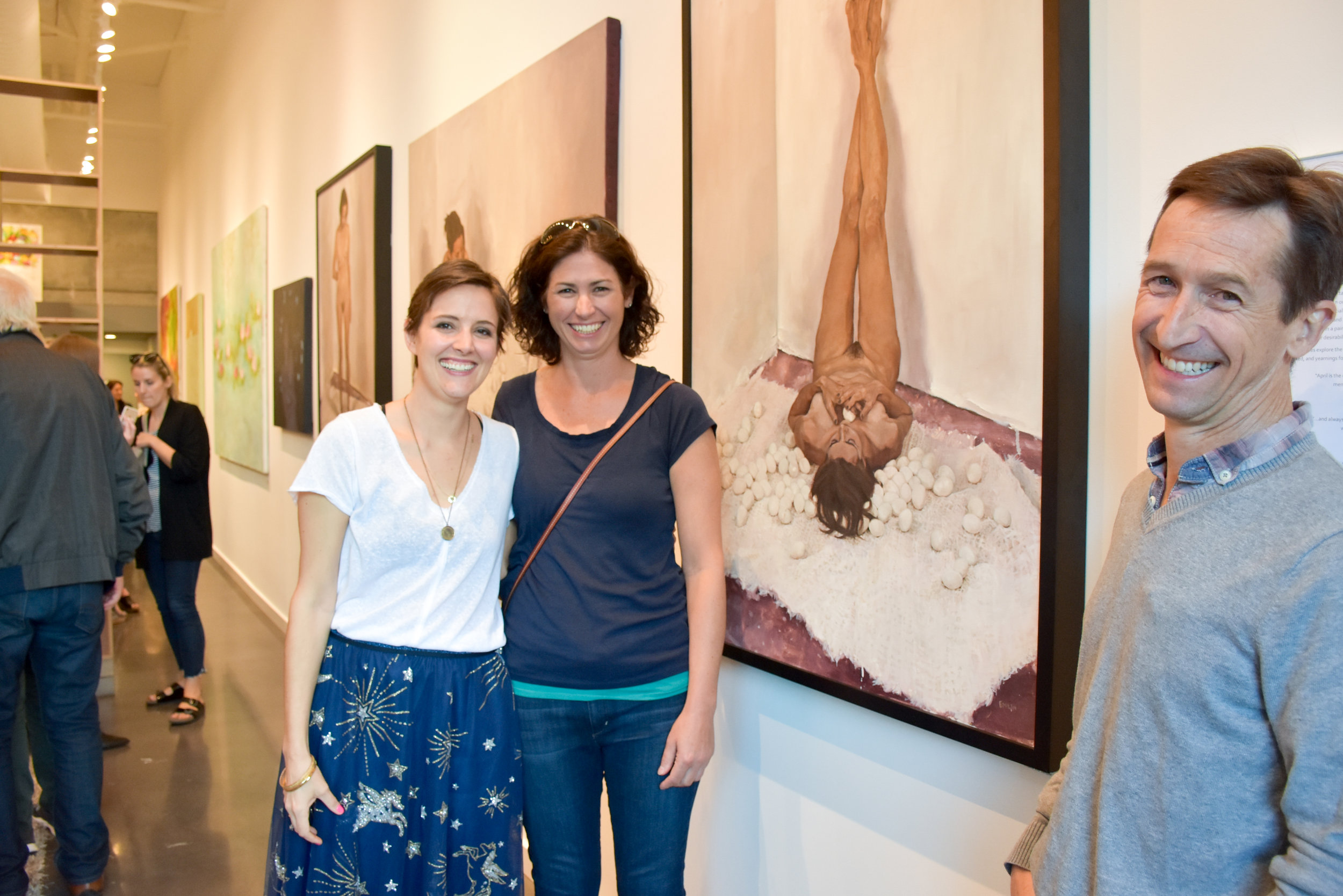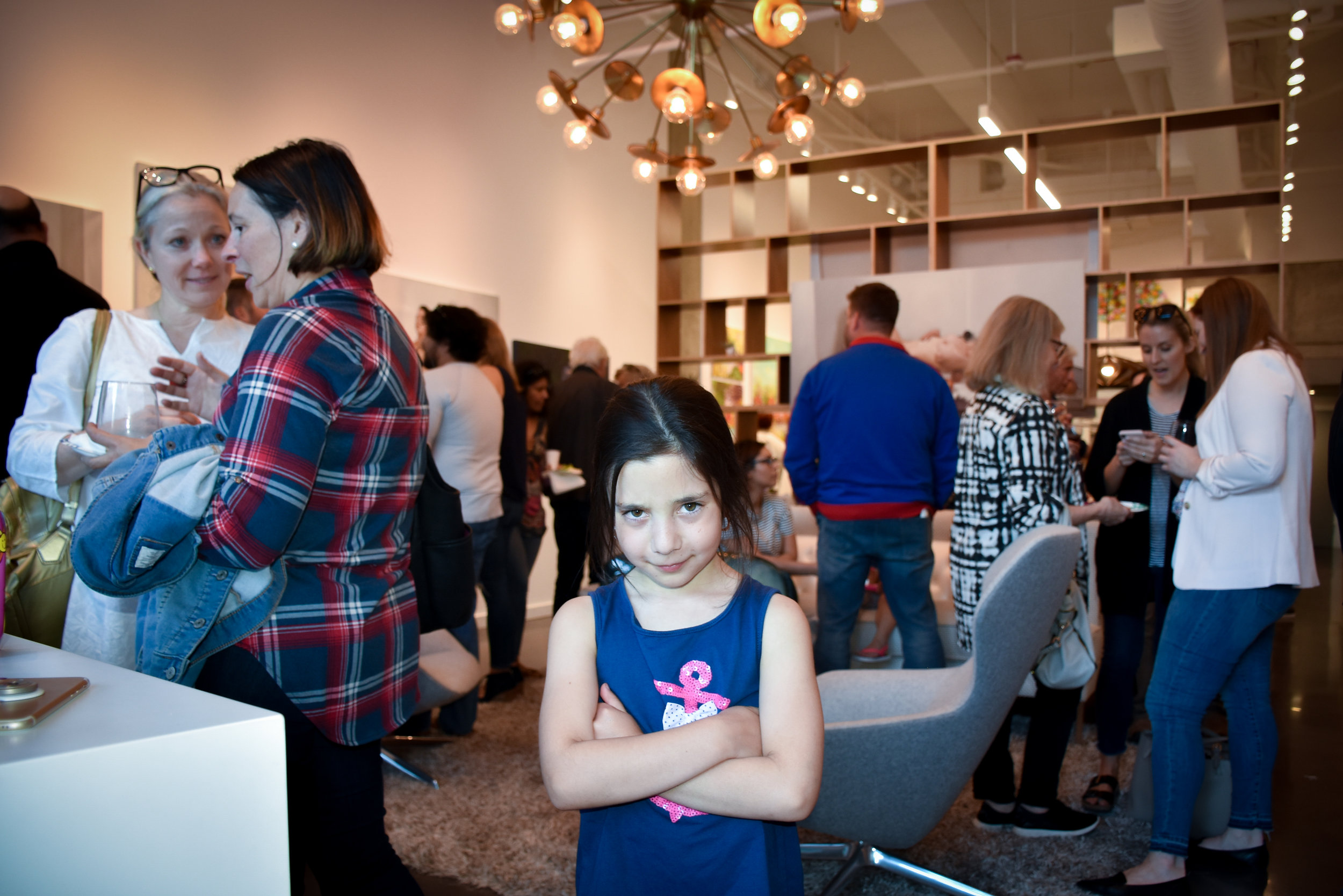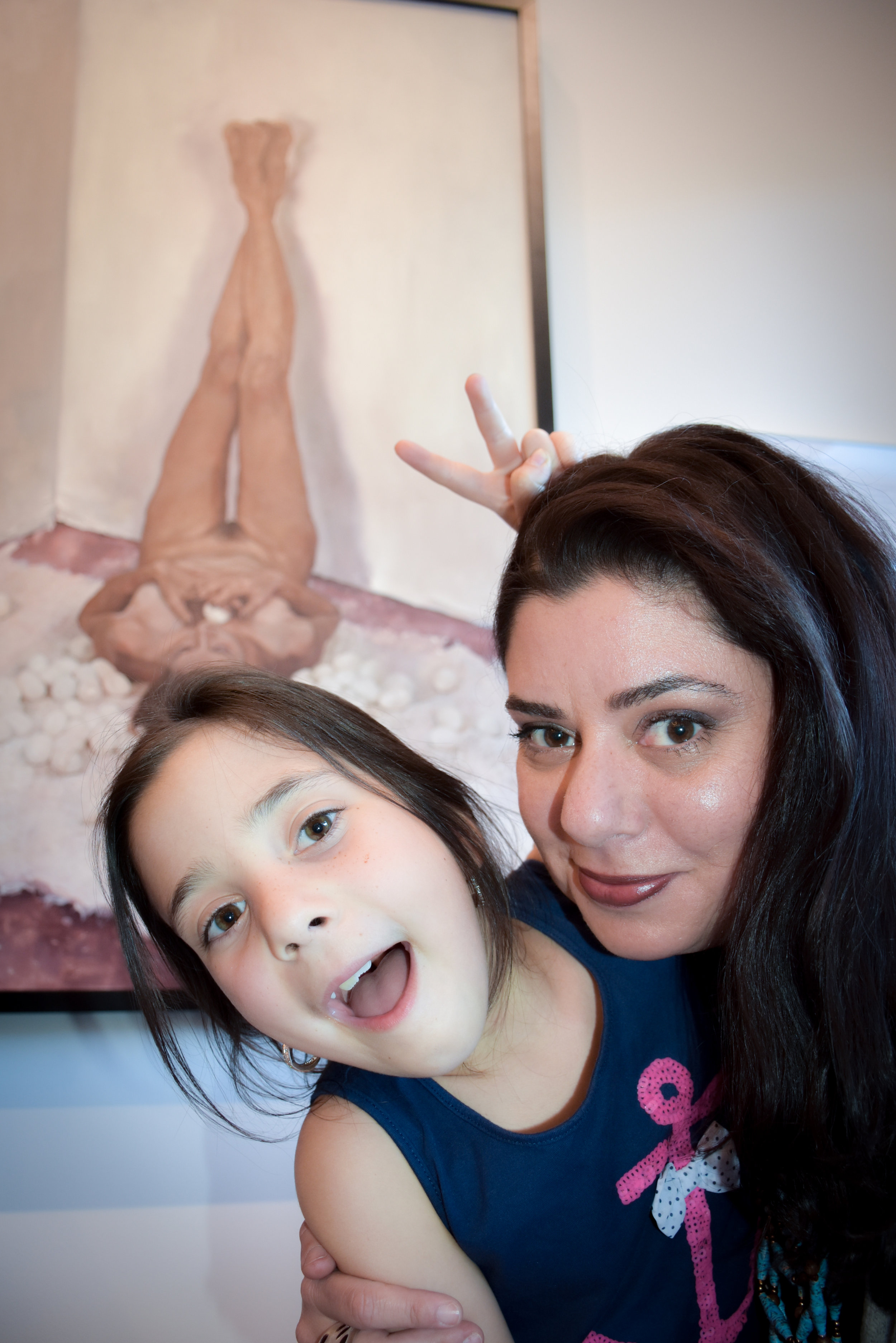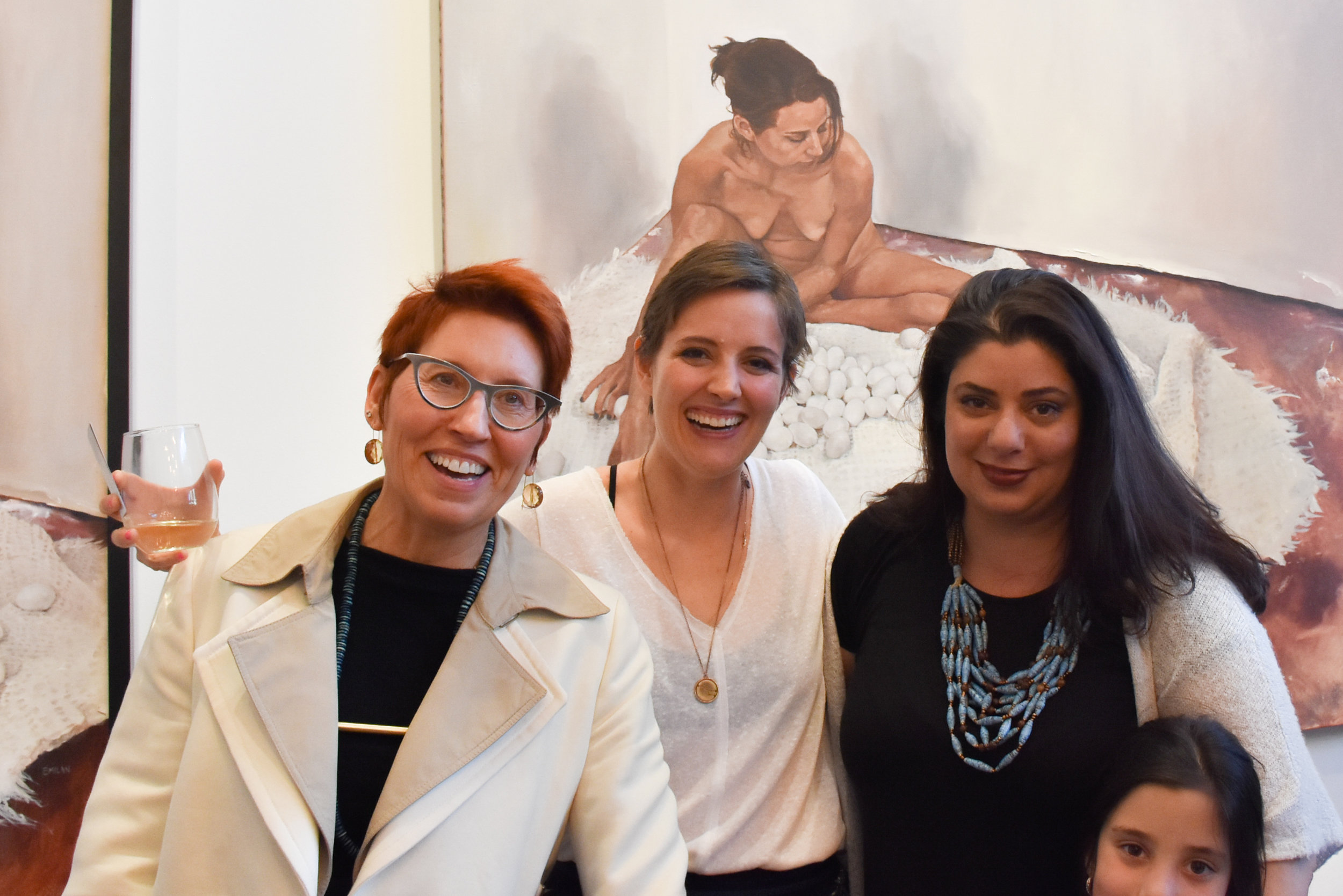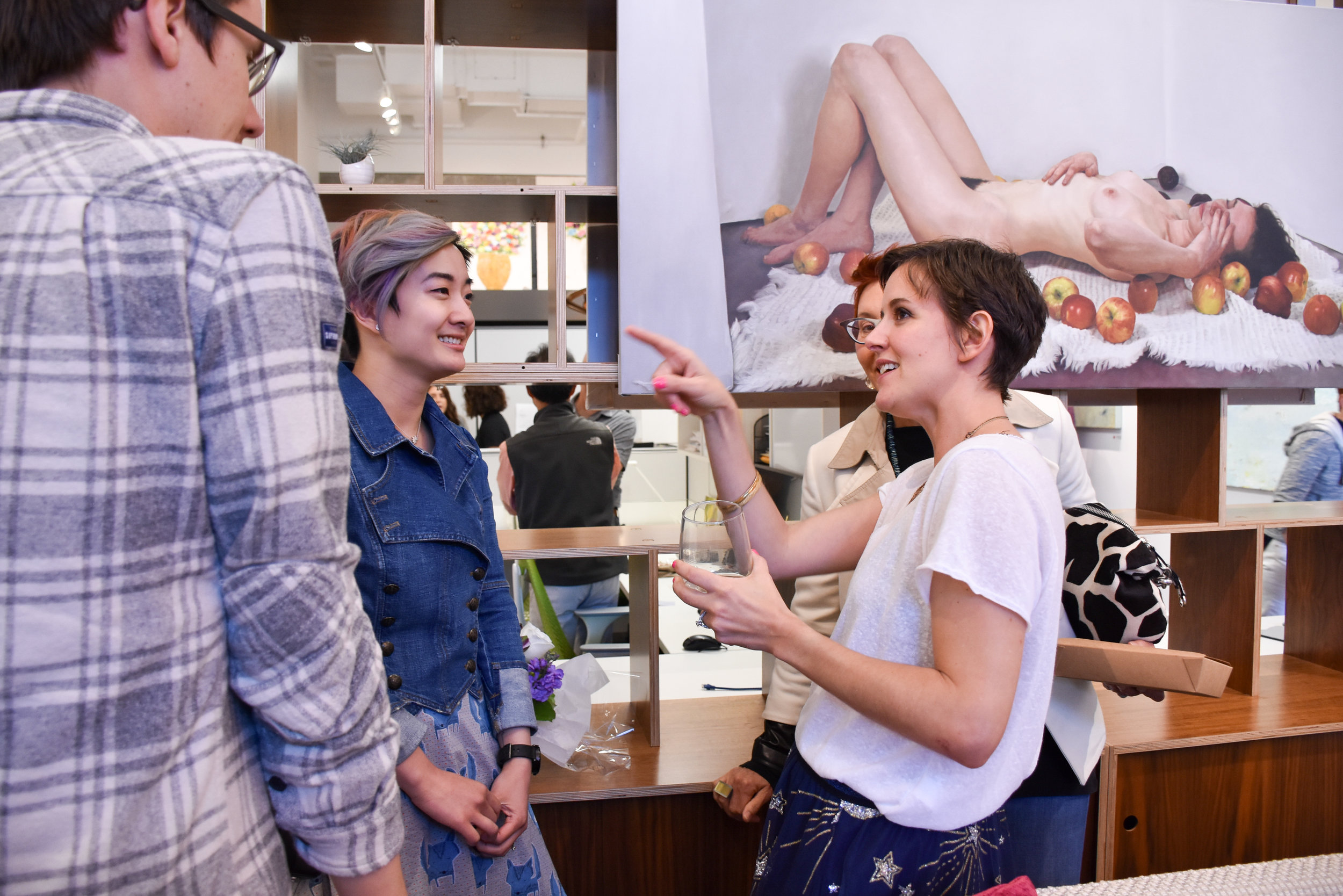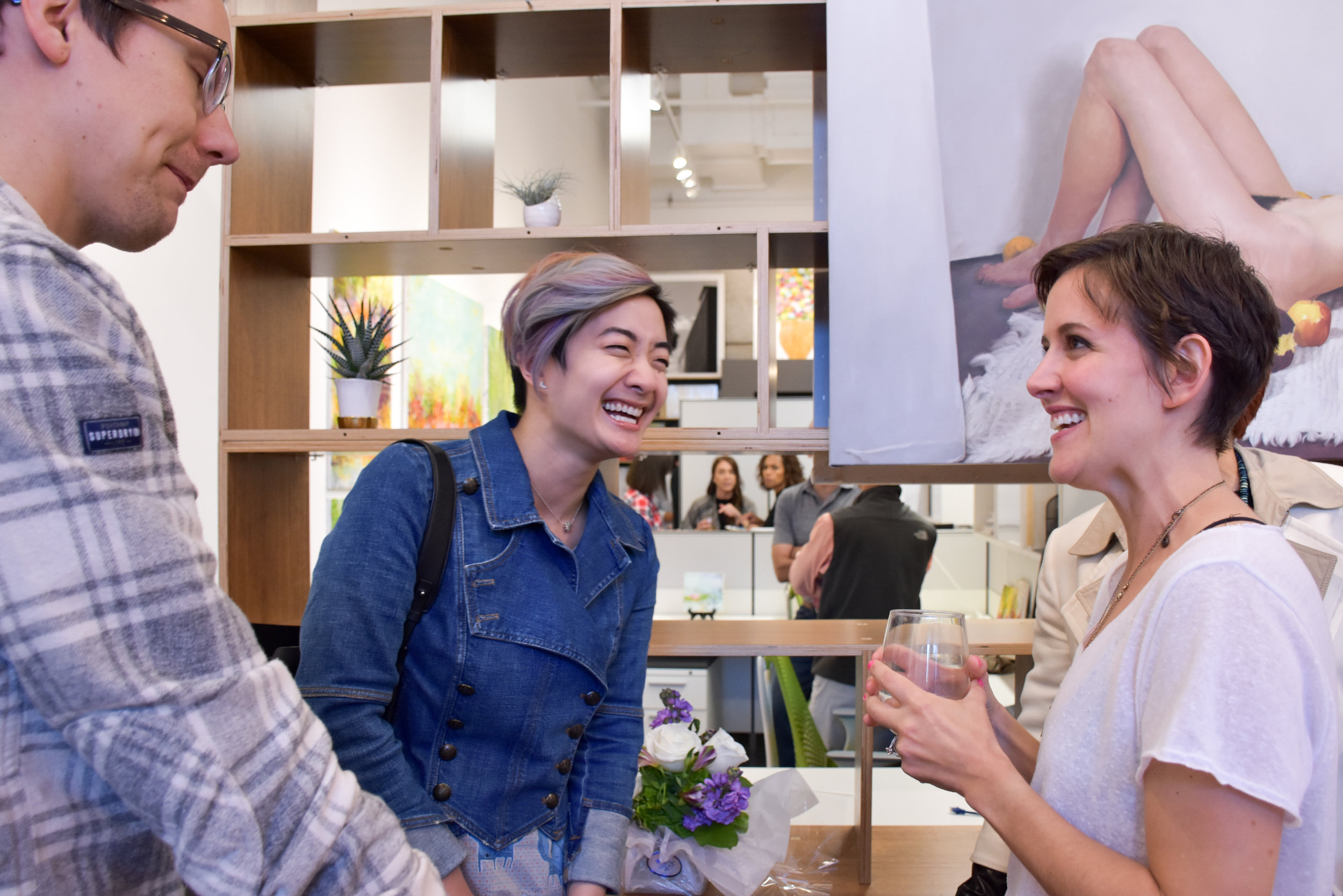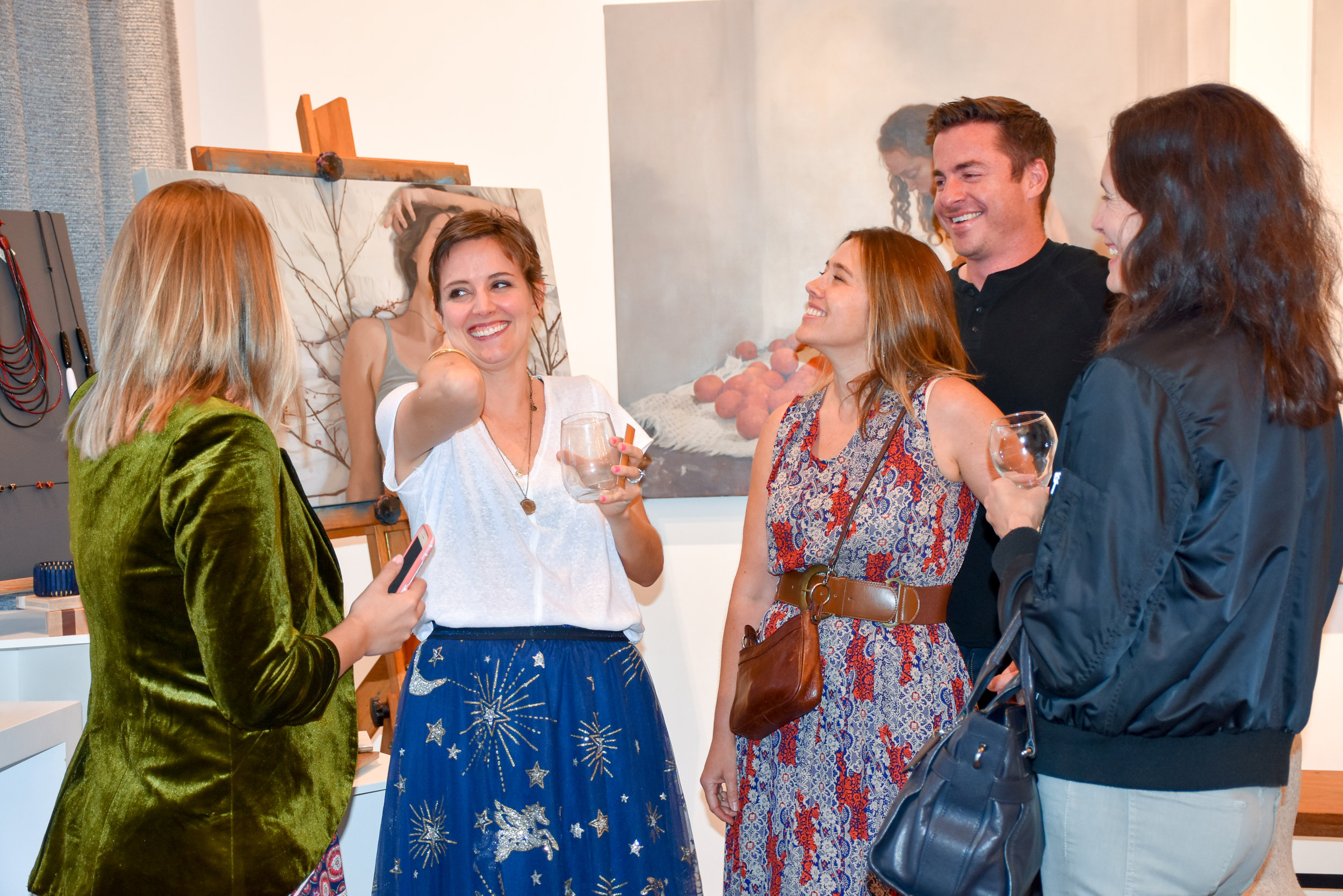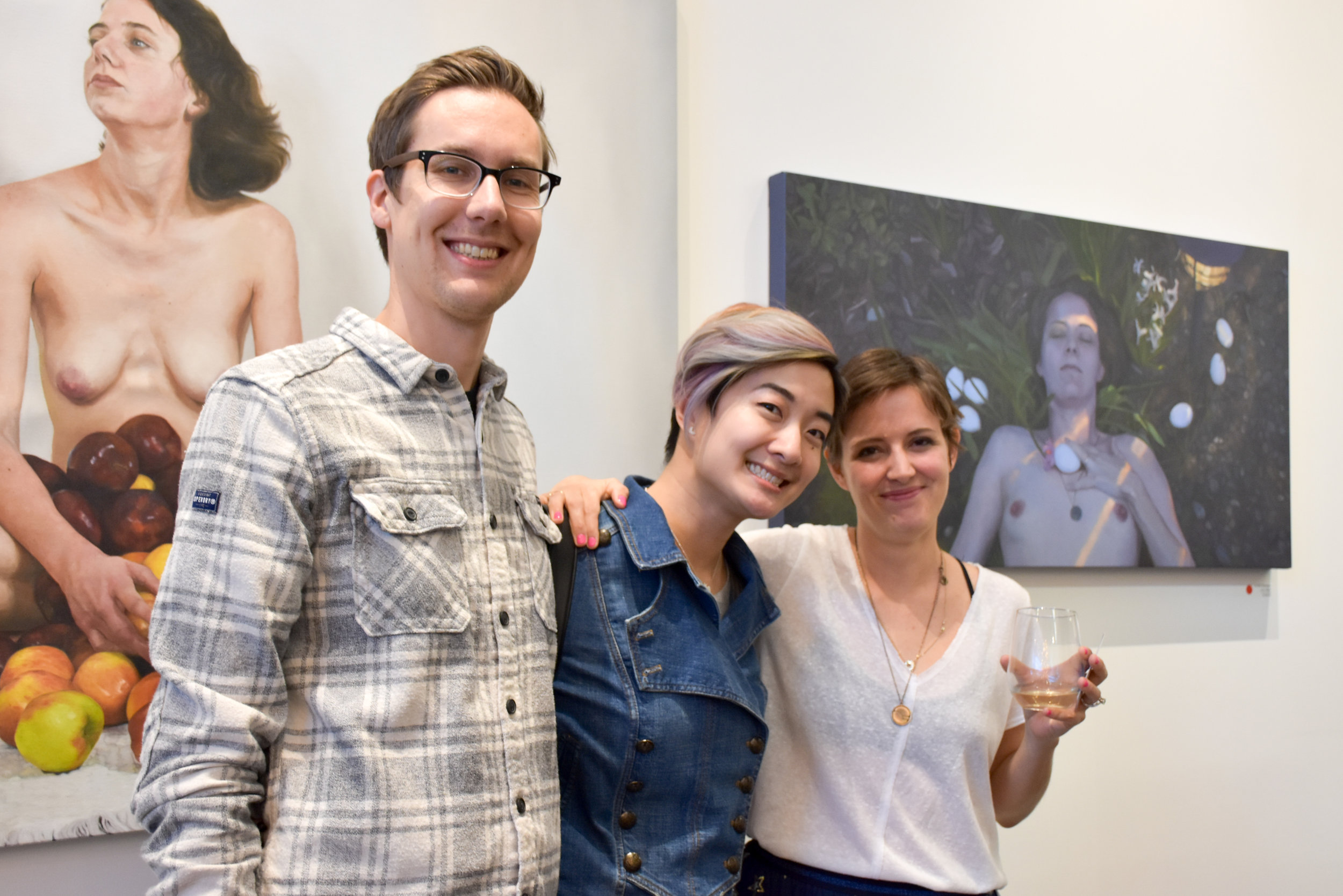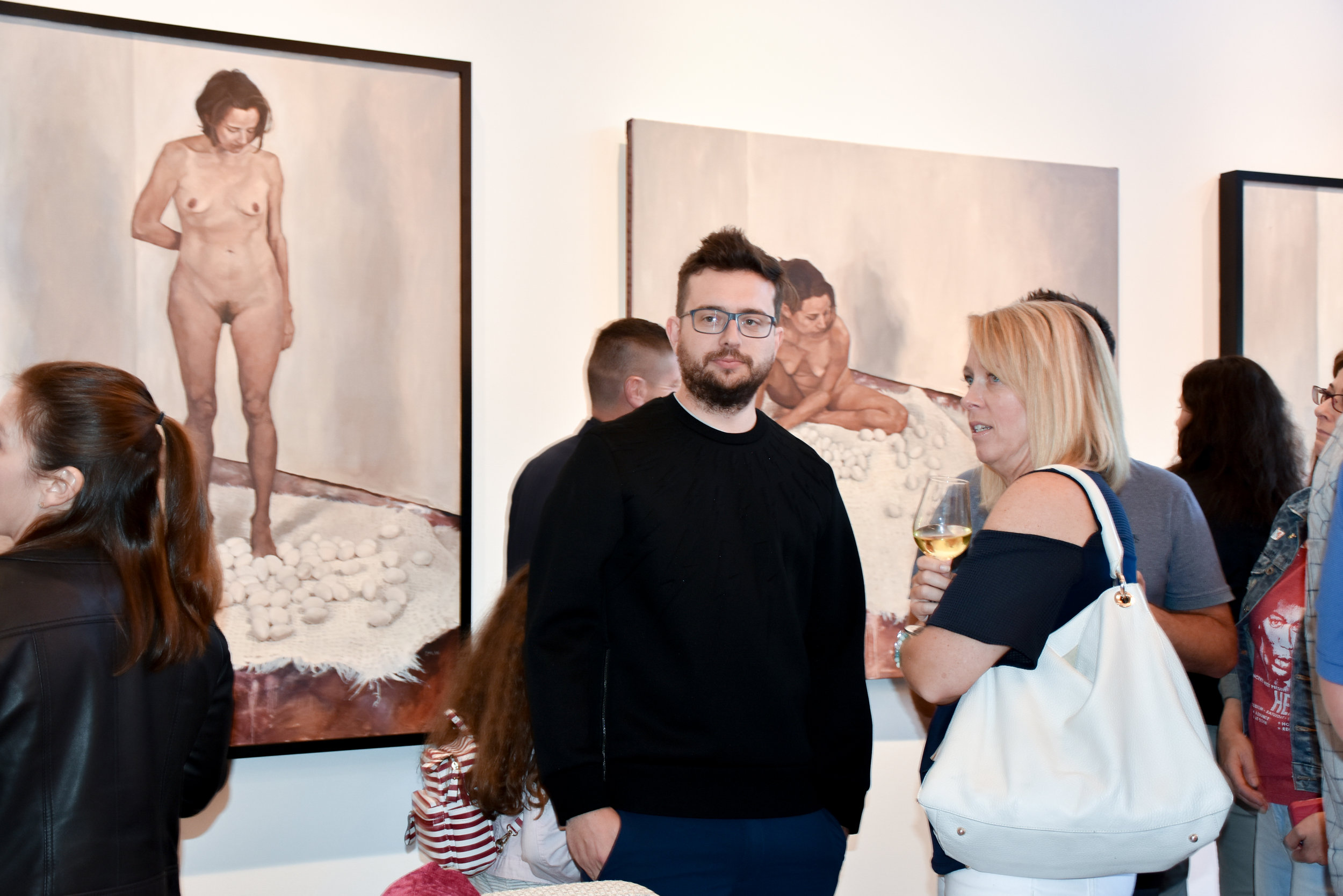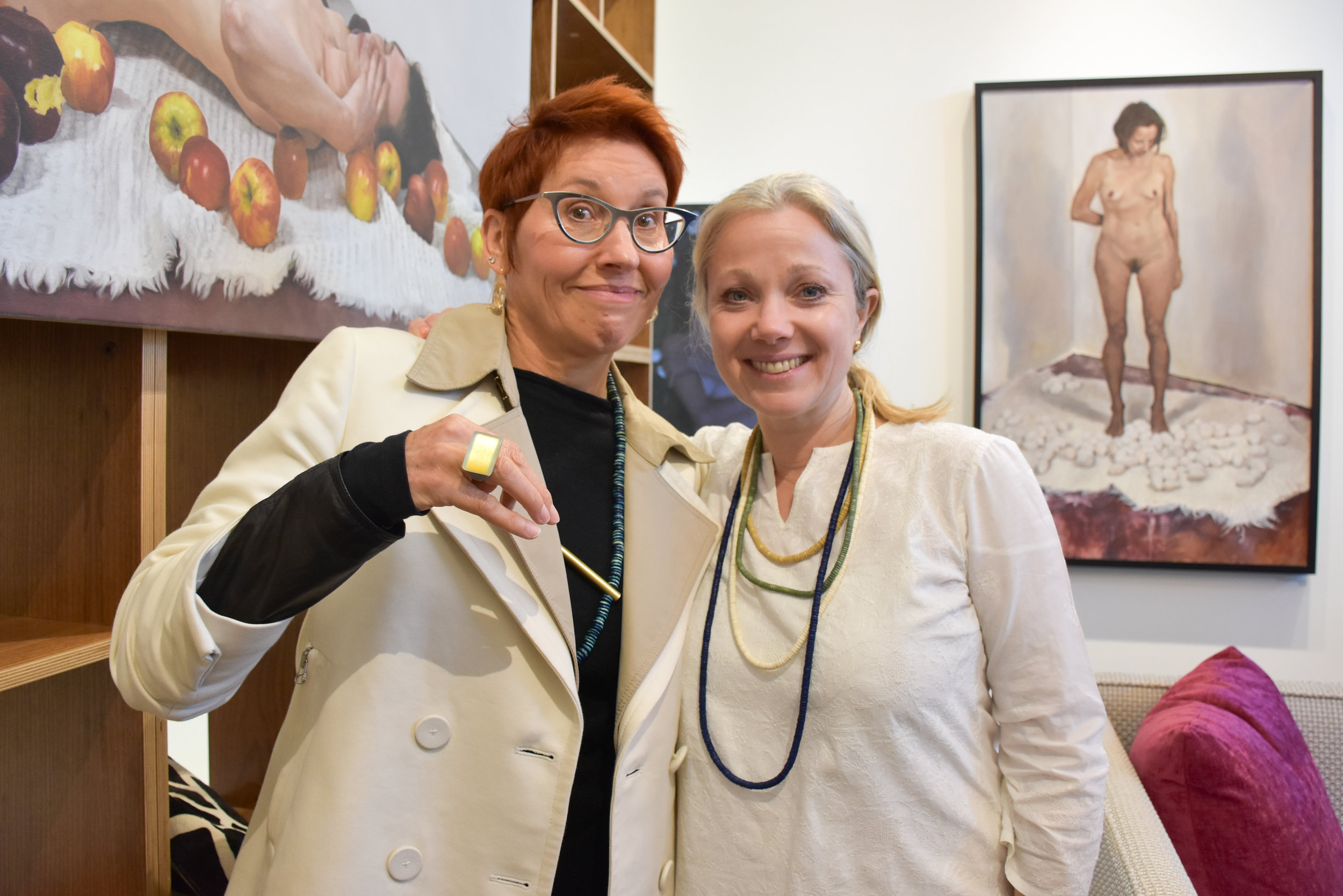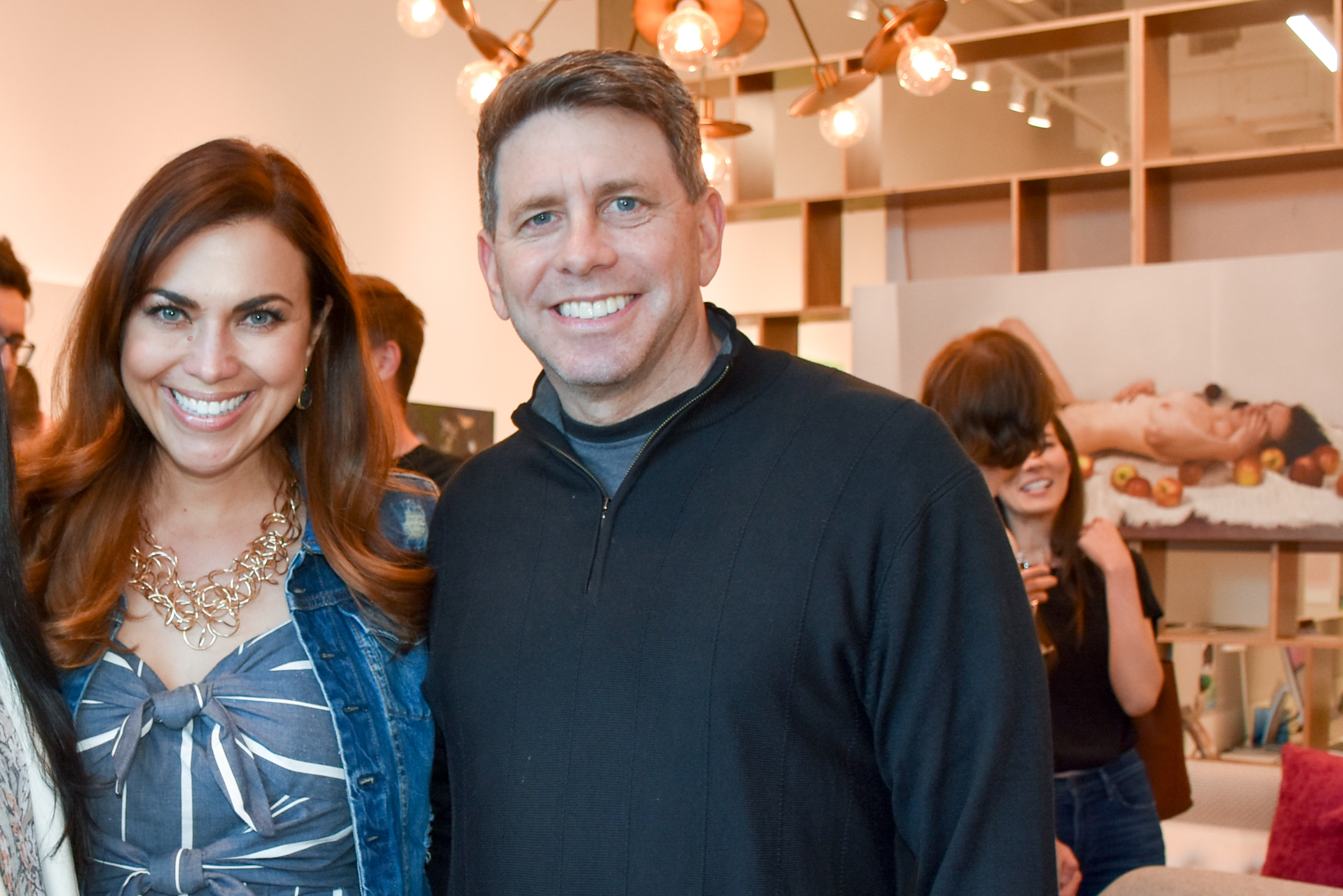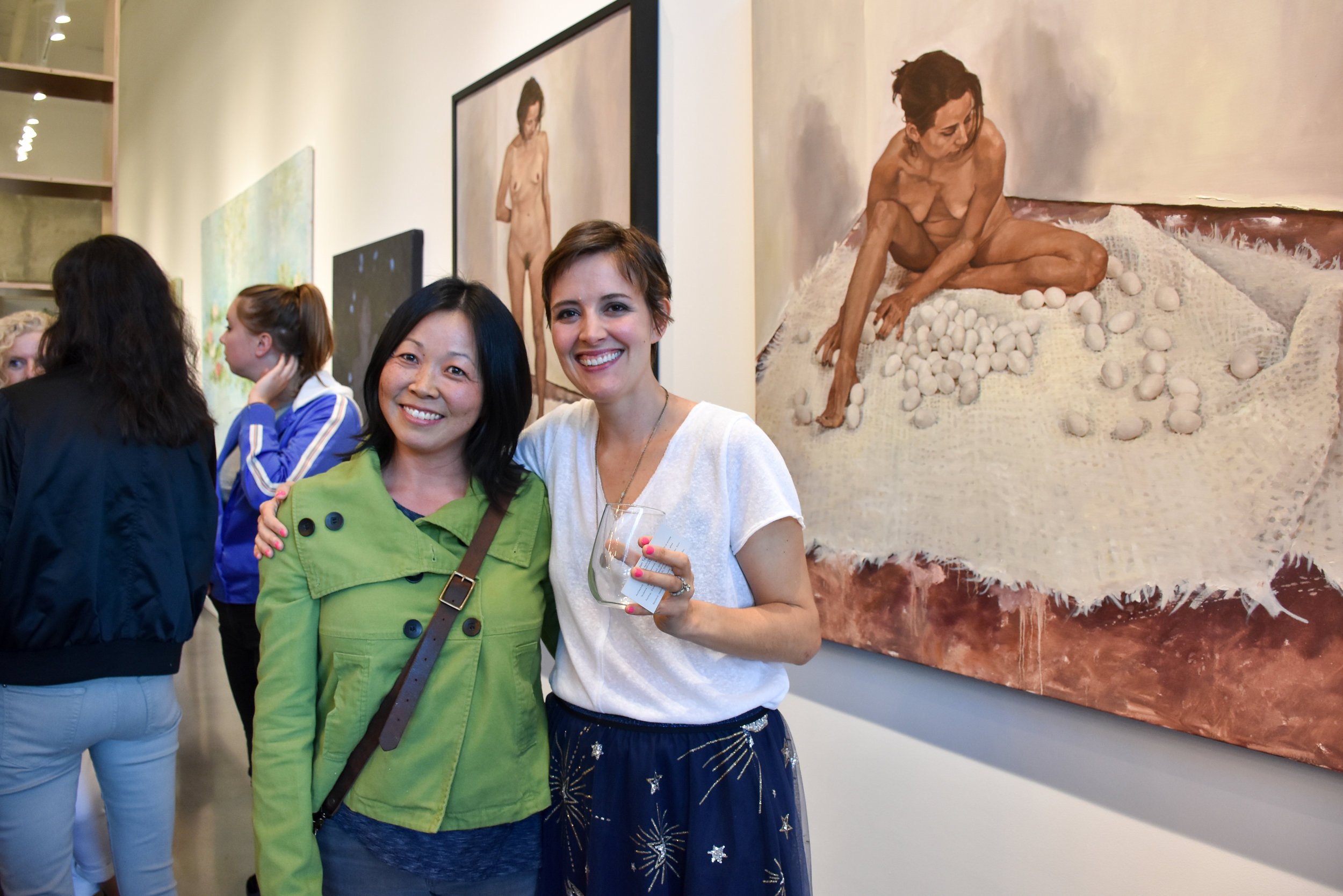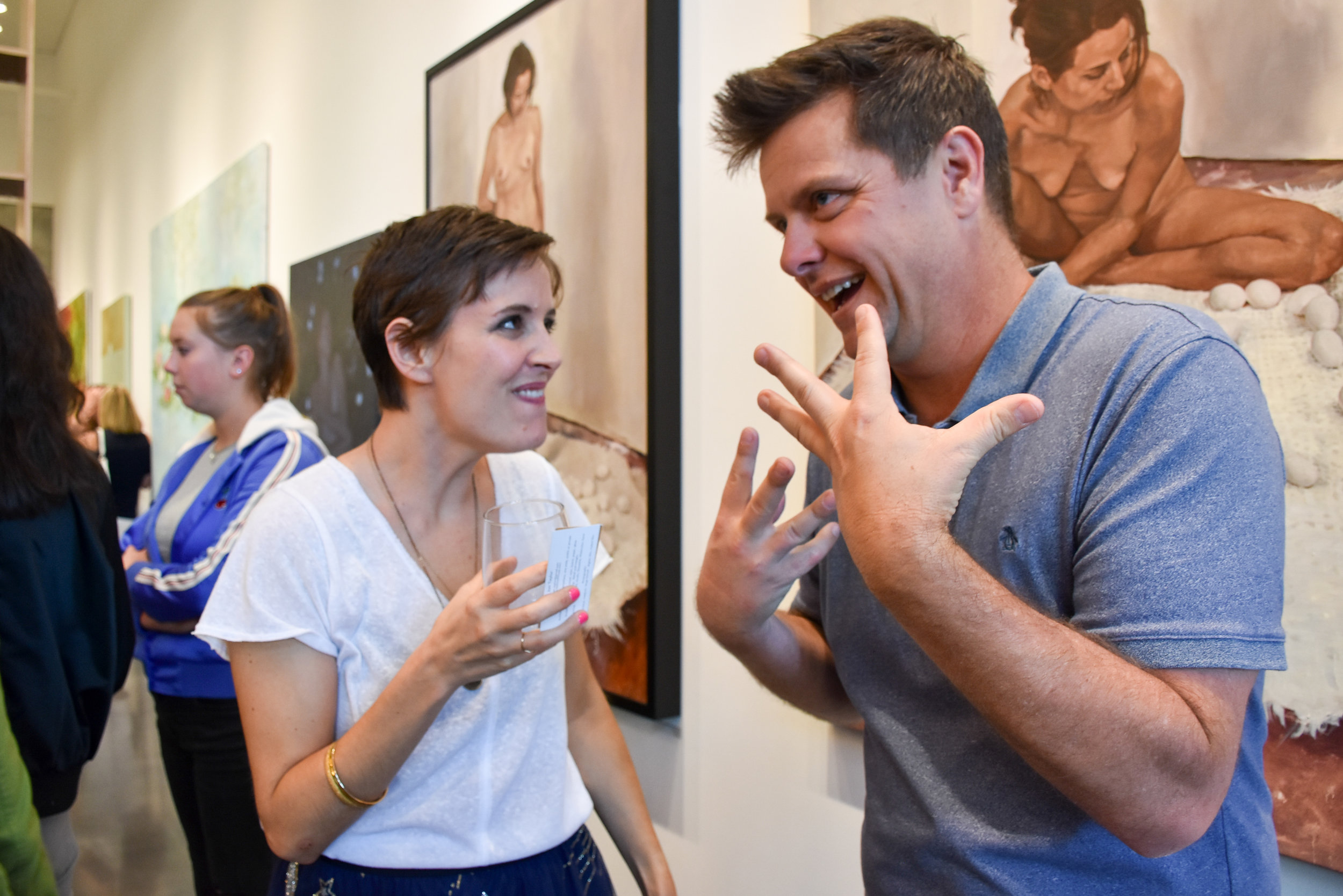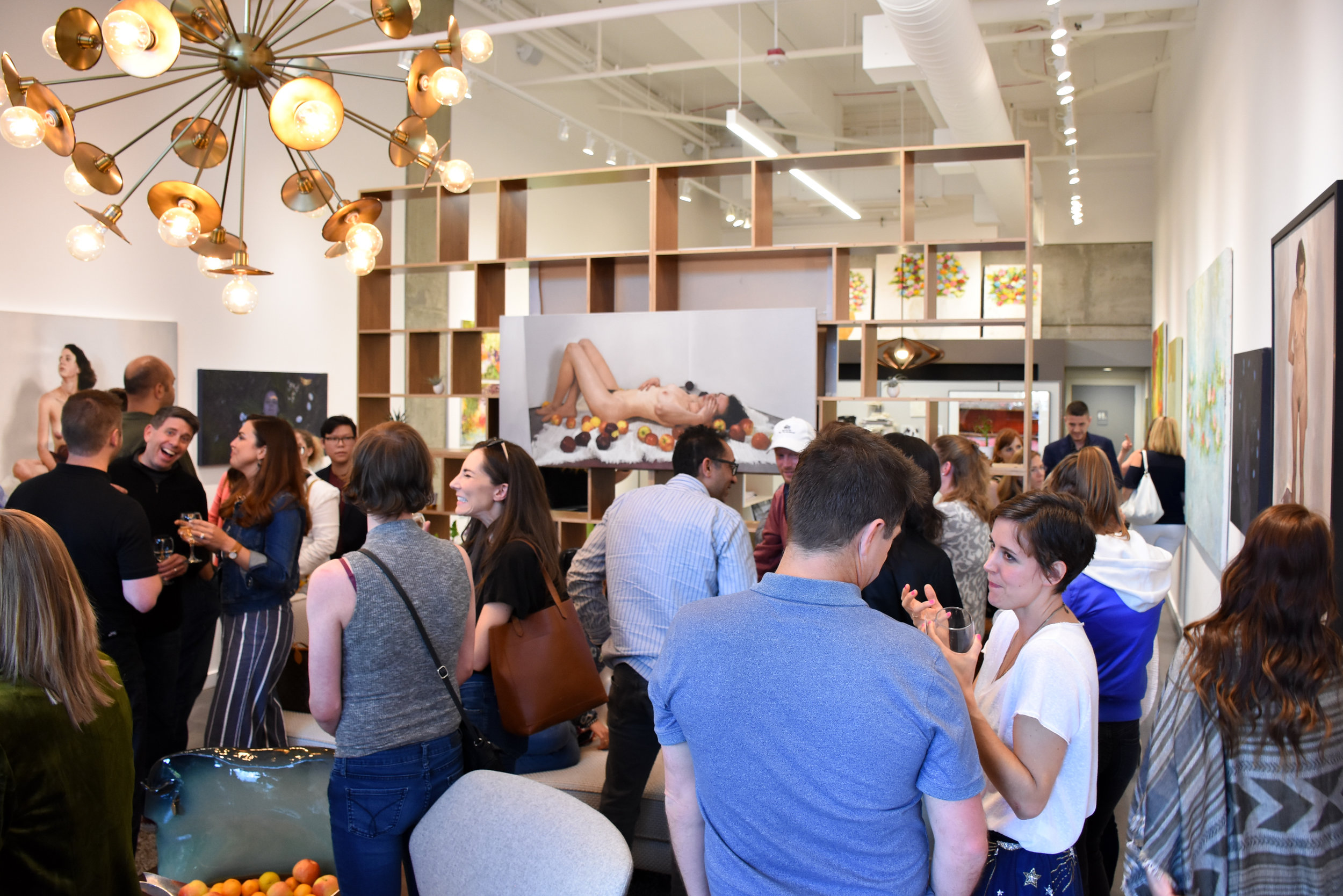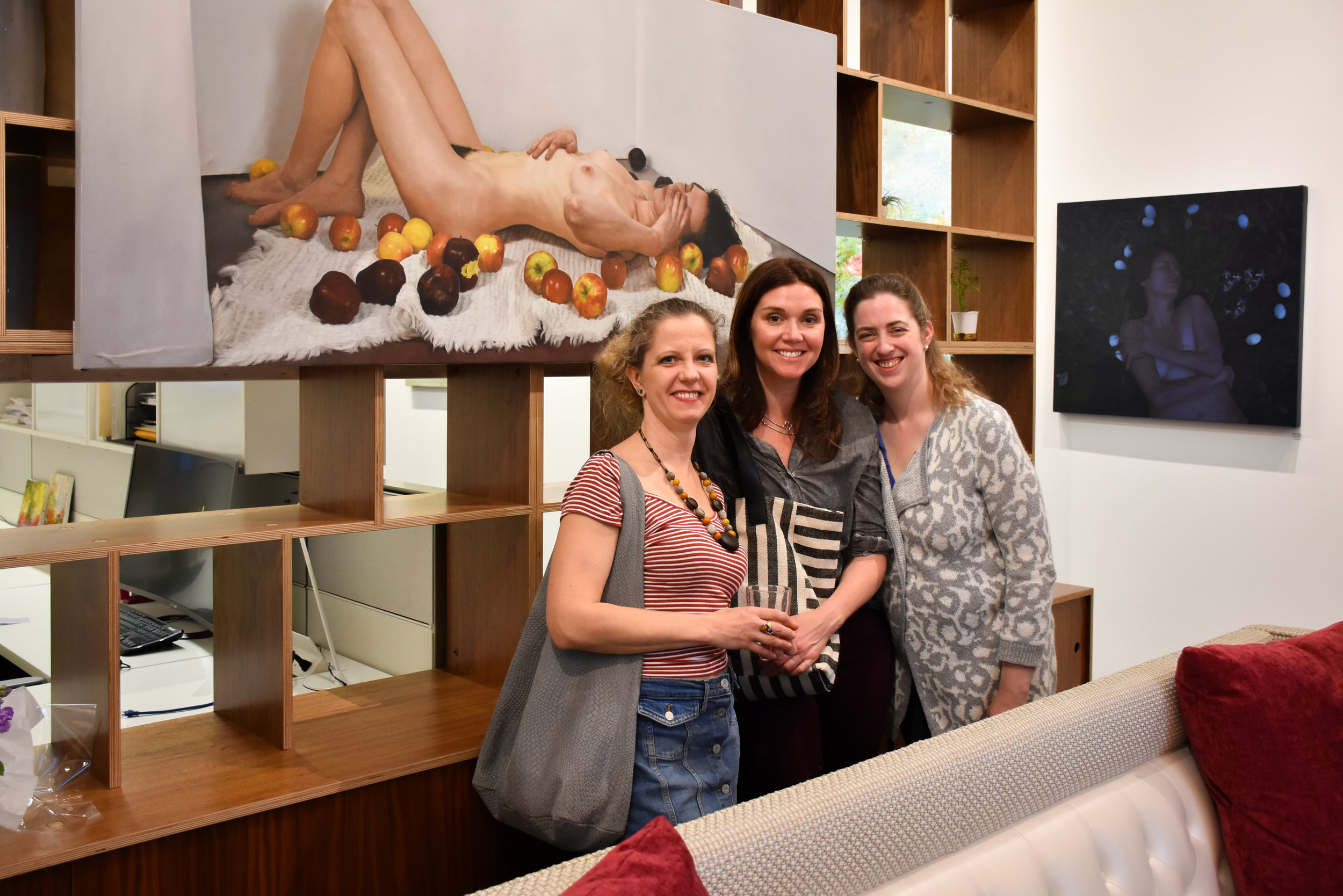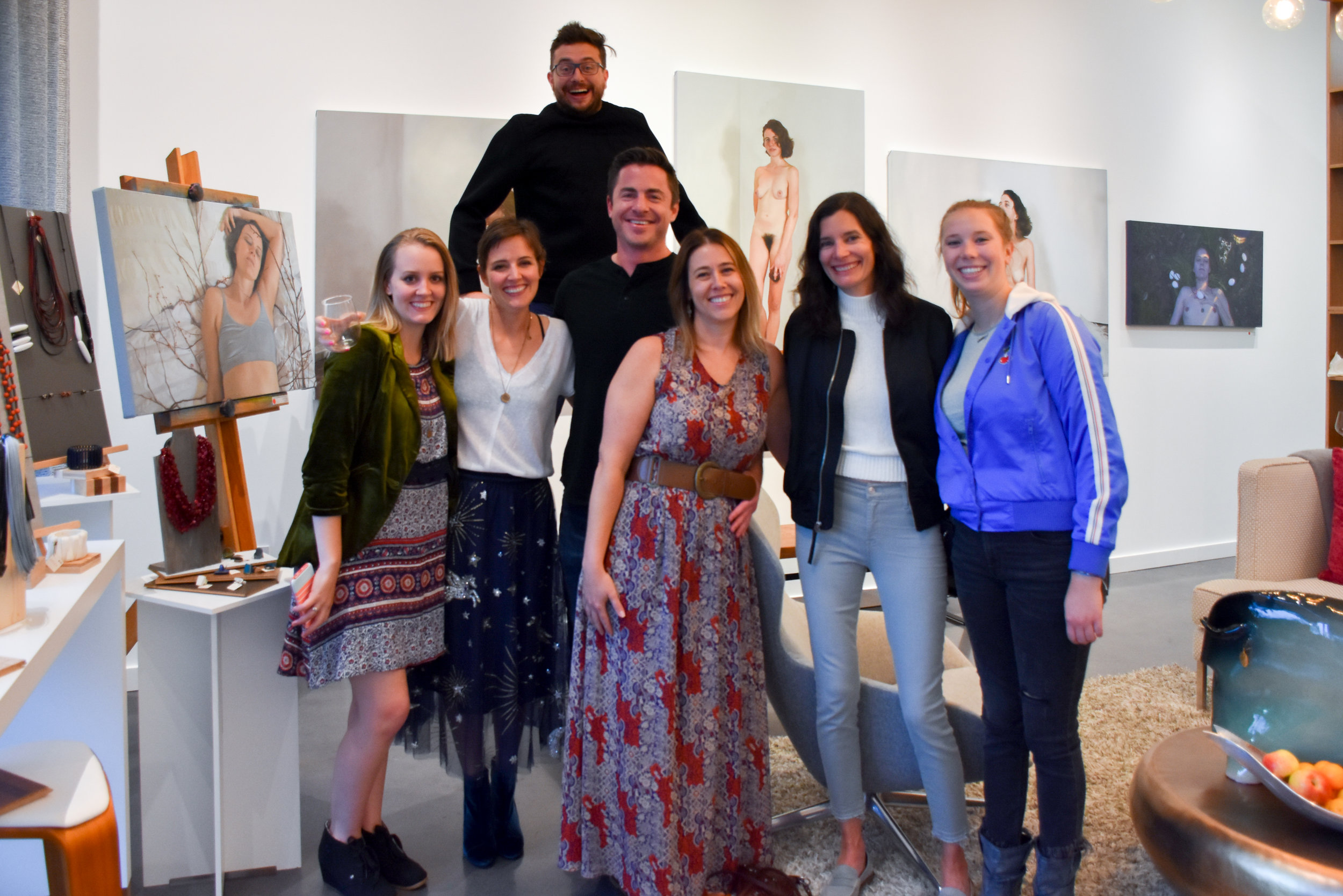For the months of June and July, we will be featuring Erin Milan's art exhibit, "VANITAS." Her pieces will be available for purchase at the gallery until July 31st. Celebrate the opening reception for Erin's exhibit on Friday, June 1st, from 5 - 8 pm at SZ Gallery. We'll have complimentary refreshments and seasonal bites to share! (Please note: The pieces contain female nudity.)
We had the opportunity to do a Q&A with Erin, and she shared an in-depth look at her personal process for this show. Read below to learn all about "VANITAS."
Julia Hess: First of all, why did you name your show "Vanitas"?
Erin Milan: The show is named after my series of women posed with food: mass amounts of eggs, apples, or oranges. Vanitas paintings are a genre of (mostly) Dutch still lifes painted in the 17th century. They tend to be quite recognizable, even to casual viewers.
The paintings show gorgeous, luscious, overly abundant displays of food and flowers, but hidden within the scenes of plenty are symbols of death and transience, such as a fly, or a piece of rotting fruit, or a skull. They were called Vanitas after a passage of scripture in Ecclesiastes that claims all life is "vanity" and will ultimately pass away into nothing.
I didn't initially set out to make Vanitas paintings of my own, but after I had done a few of the women and food, I was struck by the visual similarities of these elaborately staged displays of food (although my work, of course, includes figures as well). As I re-looked at old Vanitas works, which I hadn't really thought about since art school, I realized that there were also significant thematic crossovers. My paintings are about desire, nourishment, and the inevitability of loss.
At first, I was hesitant to use the term because my paintings are not still lifes. Ultimately, though, I decided I liked the idea that including a female body as part of a tableau of food could create a subtle indictment of the way the female figure is usually portrayed in modern culture. I don't particularly want the main gist of my work to be the confrontation of the objectification of women (although that is a worthy cause, there are other themes and ideas that are more intriguing to me), but I certainly do embrace the role the work plays in the ongoing conversation about how women are portrayed both in fine art and culture at large, what is demanded of them, and how they are so often sexualized or reduced to whatever role or image will be most gratifying to the male gaze.
Whether we like it or not, the image of a nude female is political, and I hope my work will be a voice of gentleness and acceptance of the humanity of women. My goal is always to humanize the figures (insane that one would need to humanize a human, but here we are). I felt like naming the series after a genre of still lifes was sort sneaky and subversive, even if I was the only one who would ever appreciate it. I often like when contemporary art can recall works from older times if it feels authentic and organic. I also liked the mystery and weirdness of the word "vanitas" itself; it seemed to reflect the weirdness of the paintings.
JH: What inspired you to include other objects in your "Vanitas" and "All the Wanting in the World" series, such as the oranges and eggs? What do they represent?
EM: Although I think the work can be read many different ways, the food and the branches and flowers (from All the Wanting in the World), are symbolic rather than literal. As I mentioned above, the juxtaposition of the food and the figures are certainly indicating a conversation about the humanity vs the objectification of the figure. Is she separate from the food? Does she have agency in relation to it, or is she just another object on the stage?
More than that though, for me, the other objects became a way to talk about the ambivalence of desire, or abundance, or nourishment. What does it feel like to be overwhelmed with desire, or to have your desires fulfilled but then experience fear or disappointment, or to fear that your desires are bad?
Most of the figures are posed in a way that suggests they aren't entirely comfortable with all this stuff around them. Eggs are a powerful historic symbol of life and fertility (either literal or the fertility of possibility), but they are fragile. They are ephemeral. Apples have a bit of a sexy, scandalous past (with Eve), but they are also considered wholesome and American, the proverbial gift of schoolchildren to their teachers.
The model who posed for the apple pieces, Megan, had come directly to the photo shoot from delivering divorce papers to her estranged husband. Both of them are good friends of mine. I certainly read into her paintings a sense of freedom and new opportunity, as well as deep sadness and loss. Incidentally, during my photo shoots to get the reference images of the paintings, in each case one of the food items was destroyed: I broke just one egg, one orange rolled out of the Costco box all moldy and furry, and Megan took a spontaneous bite out of one of the apples. I decided to include all of that. So you know, it's like life: messy, delicious, overwhelming, beautiful, and ultimately doomed to end.
In "All the Wanting in the World" paintings, I was continuing the conversation about desire, but specifying them to the way I always feel at the beginning of spring. Whenever the hyacinth begins to bloom, I always find myself filled with deep longing, but I never know exactly what I'm wanting. I cry when I go outside and smell the new blooms. It's painful and exhilarating. I don't think I'm the only one; the term "spring fever" must refer to that!
The branches I used for the painting in bed came from a cherry tree along the road down to my house that had been damaged in the big snow storm a few years ago (the one right after that awful Super Bowl when Tom Brady and the Patriots beat the Falcons). All of these branches were broken off the tree, some of them still hanging on morbidly by tiny threads, and some just piled up alongside the road. I was astonished when later that spring, those damned broken branches bloomed right alongside with the remaining healthy ones. It seemed utterly beautiful and terrible at once; this life that refused to quit, even when hope was gone.
JH: The titles of your pieces for the "Vanitas" series are quite unique and abstract. Can you share a bit about your process for creating titles for these pieces?
EM: The titles for those all come from poetry by Rumi. I was reading a book of his collected work during the year I was doing this series, and basically just freaking out about how beautiful and challenging his words are. He had such a lovely way of getting at the core of all these things I was feeling while I was making the paintings.
I can talk about them a little more articulately now, at a distance of a year or so, but when I was working on them, they were just images in my mind that I was slowly bringing to life, but still wasn't sure why. Rumi's words helped crystallize my thoughts a lot, so much so that I had to use them. Each food is titled with fragments of the same poem; the egg paintings all come from one poem, and so on.
JH: In your bio, you mention that you lived in Kansas and attended school in Southern California. How does it feel doing art here in the Pacific Northwest and on Mercer Island? Is it different or the same, and in what ways?
EM: That's an interesting question! I would say the big difference is that since coming to the Northwest I've been doing work mostly in isolation. I naturally had a large group of artist friends in school, but once we graduated and came up here it was harder to get plugged into the art community (maybe partly due to the infamous Seattle freeze!). Not very long after our move to Seattle I stopped making art to have babies, and so I stopped seeking and investing in other artists as well.
I'm surrounded by tech smarties and professional rockstars on Mercer Island, and it can be quite intimidating! Luckily I've been able to come out of my cave lately and have made some great artist friends in the area who help me feel less crazy. Having a solo exhibit also goes a long way toward convincing myself that art can be an actual career :).
I've been very nourished by the thriving art community on Instagram (I think a lot of us introverts feel most comfortable sharing on that platform). As far as regional differences, I think I probably have been falling in love/hate with the natural beauty of the Northwest in a way that gets reflected in the work... the green, the wet, the flowers and leaves.
JH: What has changed in your art, or your artistic process, since returning from your hiatus?
EM: I stopped painting during a time of personal upheaval. I was depressed, probably having a quarter-life crisis, and worrying very earnestly that I had "peaked in middle school" professionally. I had always envisioned being a stay-at-home mom, like my mom, whom I adored with all my being. I really didn't think I would go back to painting.
But once our youngest turned a year old, my husband, who had insisted on buying a house with a studio space and making it our first renovation project (omg thank you Joe!), thought we should hire an au pair. I was a little rattled because I still wasn't thinking about painting, but I felt too guilty sitting around doing nothing with all that childcare. It took at least a year of making studies and small works to get any kind of momentum or inspiration going. I could not have gotten back to work if it hadn't been for Joe and our wonderful au pairs.
Once I got going though, I went hard. And although I could have never predicted it back when I stopped painting, having kids absolutely made me a better, happier artist. (I also learned that I'm not happiest as a stay-at-home mom, which was a little bittersweet). Now I'm much more aware that time is limited, so I manage it very well, and I'm grateful each time I get to work.
It's difficult to balance family and career (we all know this), especially because we no longer have childcare, but I'm a lot more focused and happy in general now. Thematically, I had discovered figurative painting in college and loved it so much, I knew I never wanted to go back. That was nice because when I restarted, at least I could begin with figure studies. I stumbled into food because while I was trying to warm up, I decided to make some studies of fruit, which is a classic thing artists have always painted to hone their skills. I fell in love with it, and just wanted to do it MORE, and then before I knew it I was laying on the ground with eighty eggs around me and the camera remote in my hand. As one does.
I've also been pushing toward a higher level of realism than I was doing before. I took a workshop with a painter I love, Lee Price, and she taught me some killer techniques for approaching hyper-realism. It's something I've always wanted to try, and it's a fun way to paint.
Right now I'm doing a series of more traditional portraits because I've also found that I enjoy painting interiors and random objects. I just did a painting that included a couple brown paper bags full of recycling, and it was great. The new work is still examining the way we experience desire in our lives, and especially as we are going about the routine of our daily lives, which can feel so mundane and be trapping.
If the Vanitas series is poetry, my new work is prose. But I'll always be doing what every artist, in painting or film or literature or music or whatever, does, which is trying to come to terms with what being human feels like.
- - - - -
View Erin's exhibit "Vanitas" at SZ Gallery from June 1st to July 31st and visit the artist's page for more.
06.01.2018 - 08.01.2018
Opening Reception - First Friday, June 1st, 5:00 - 8:00PM
Artist Reception - First Friday, July 6th, 5:00 - 8:00PM


